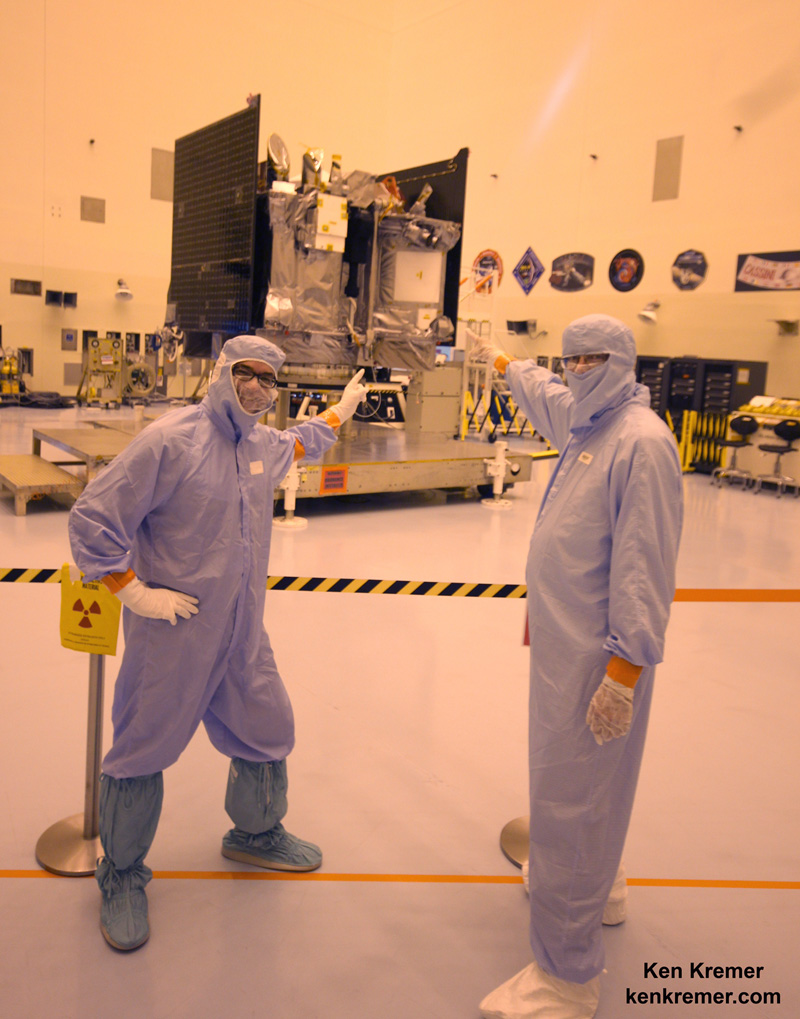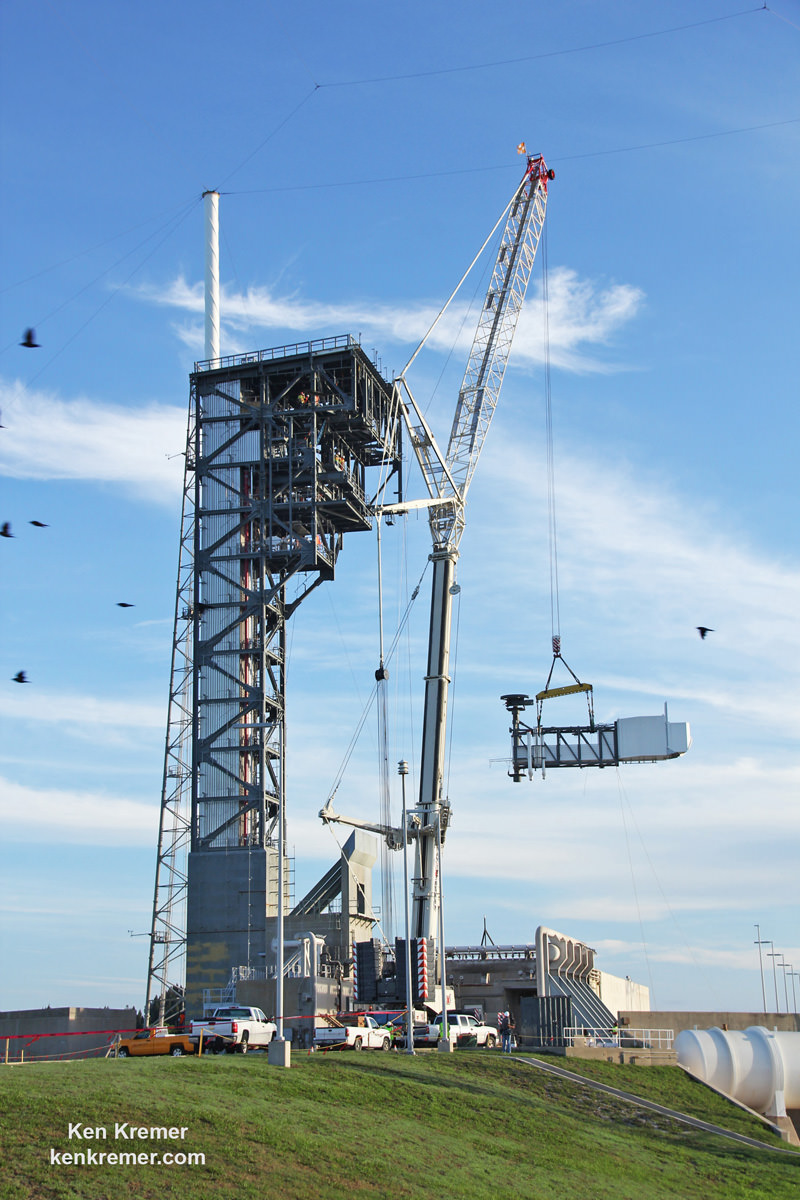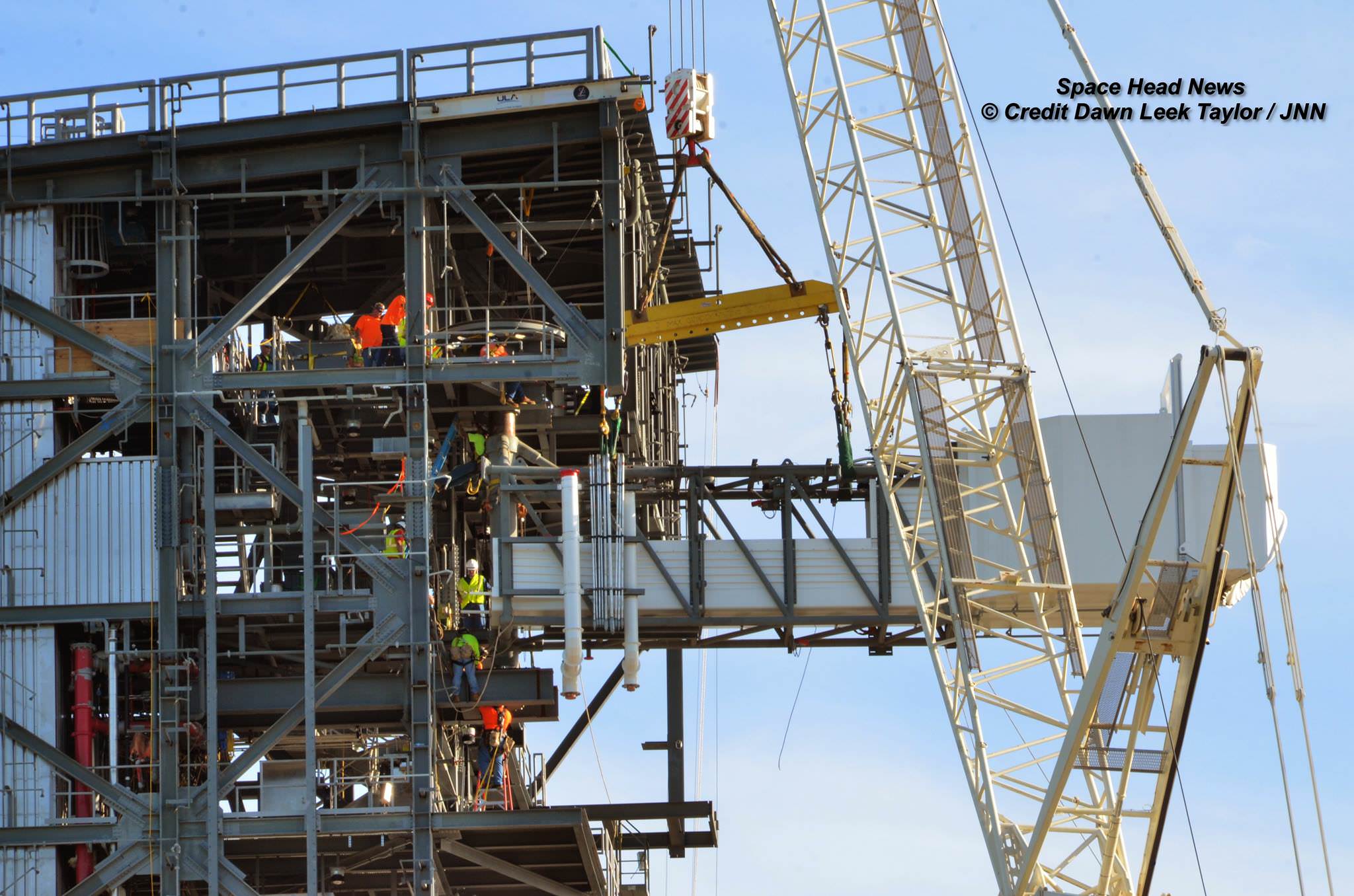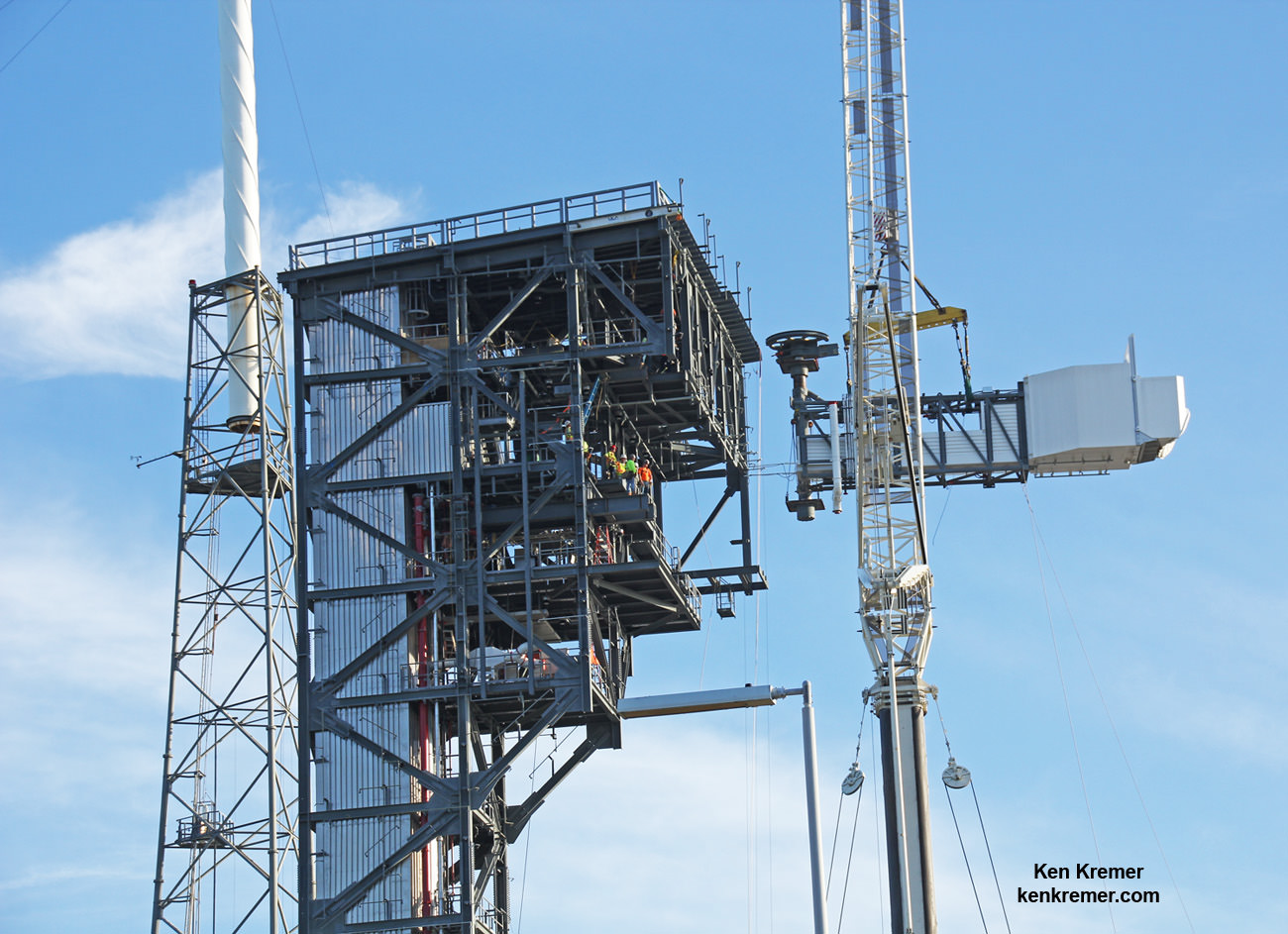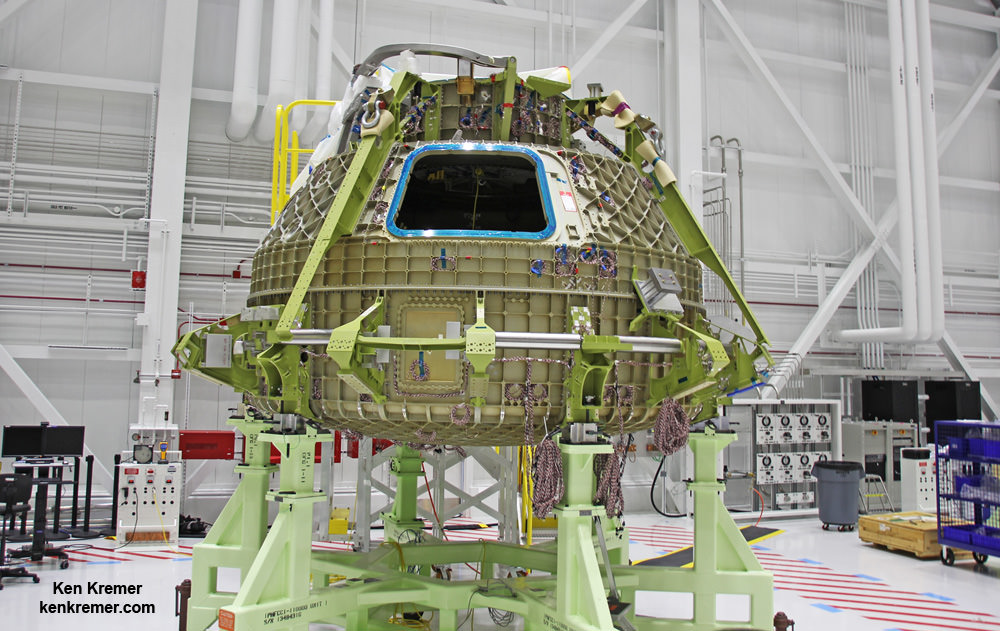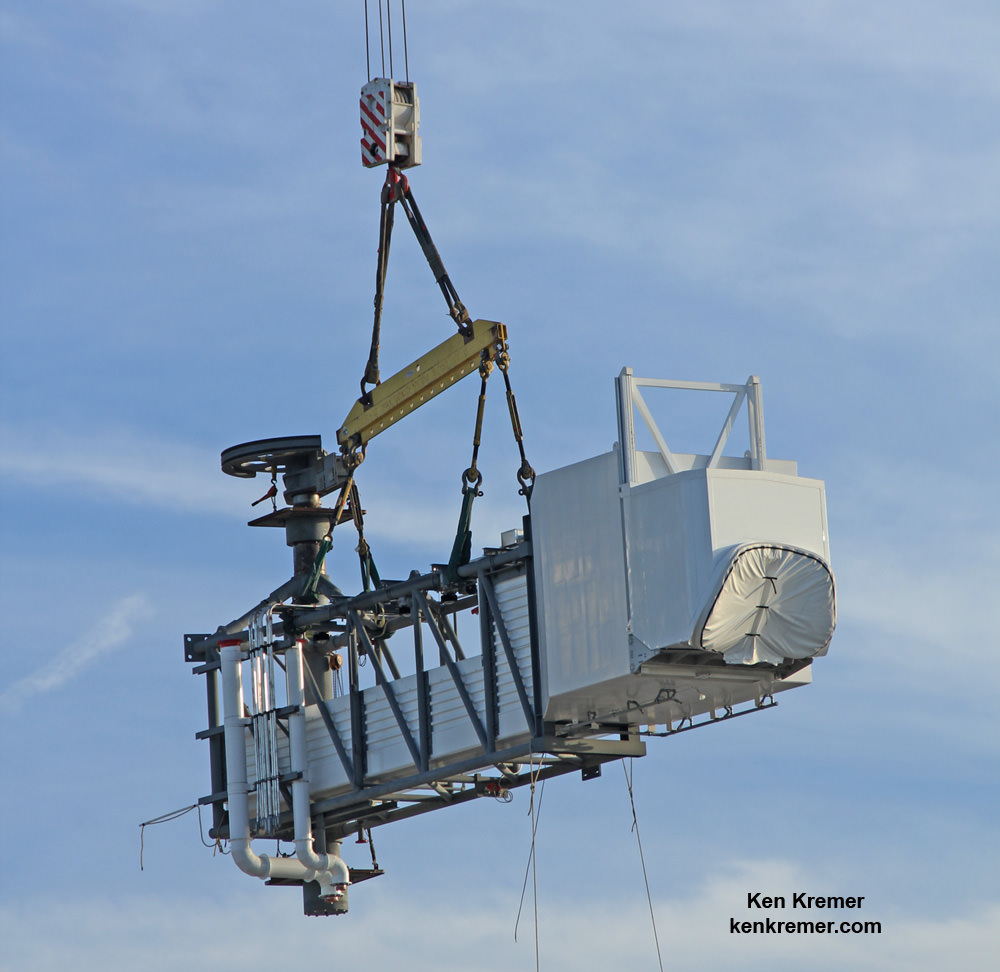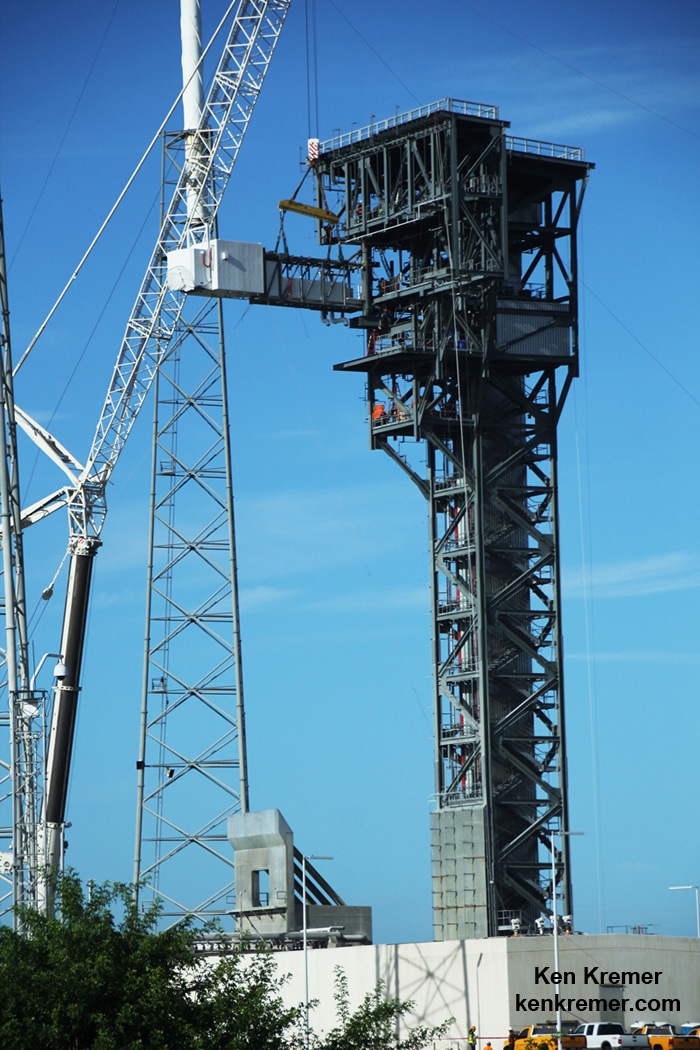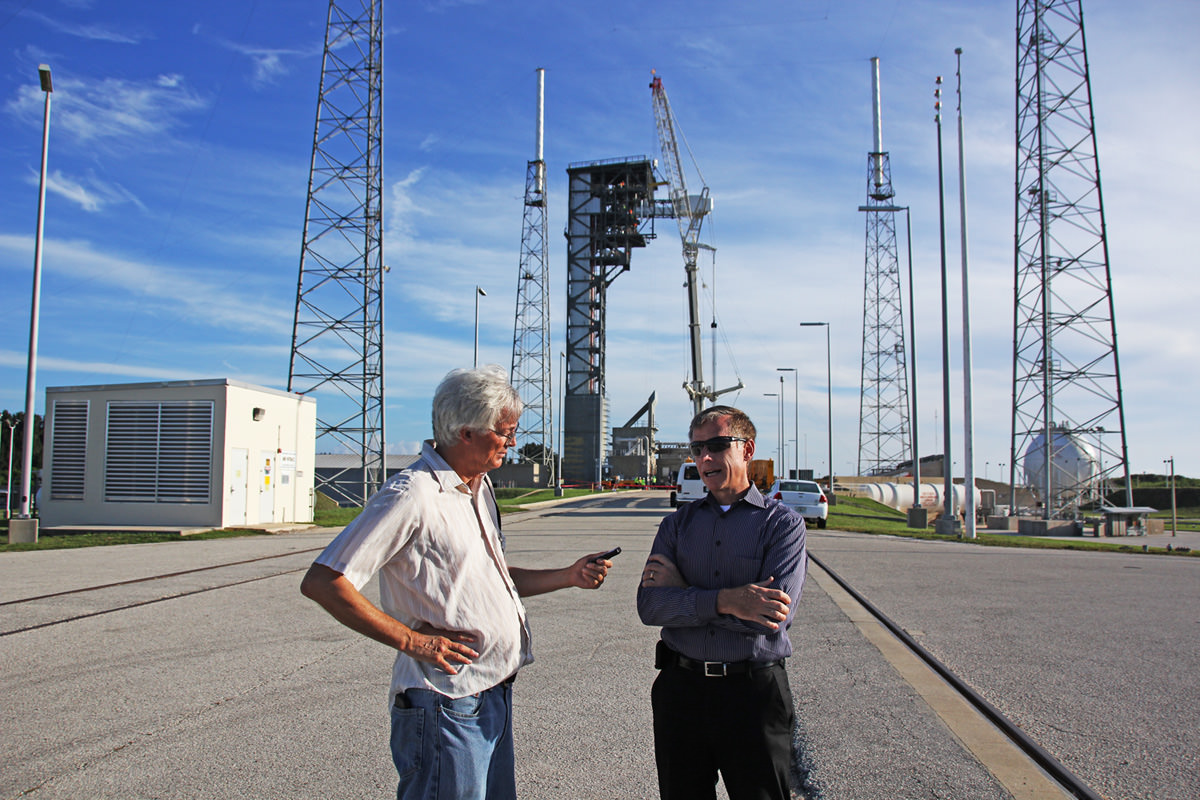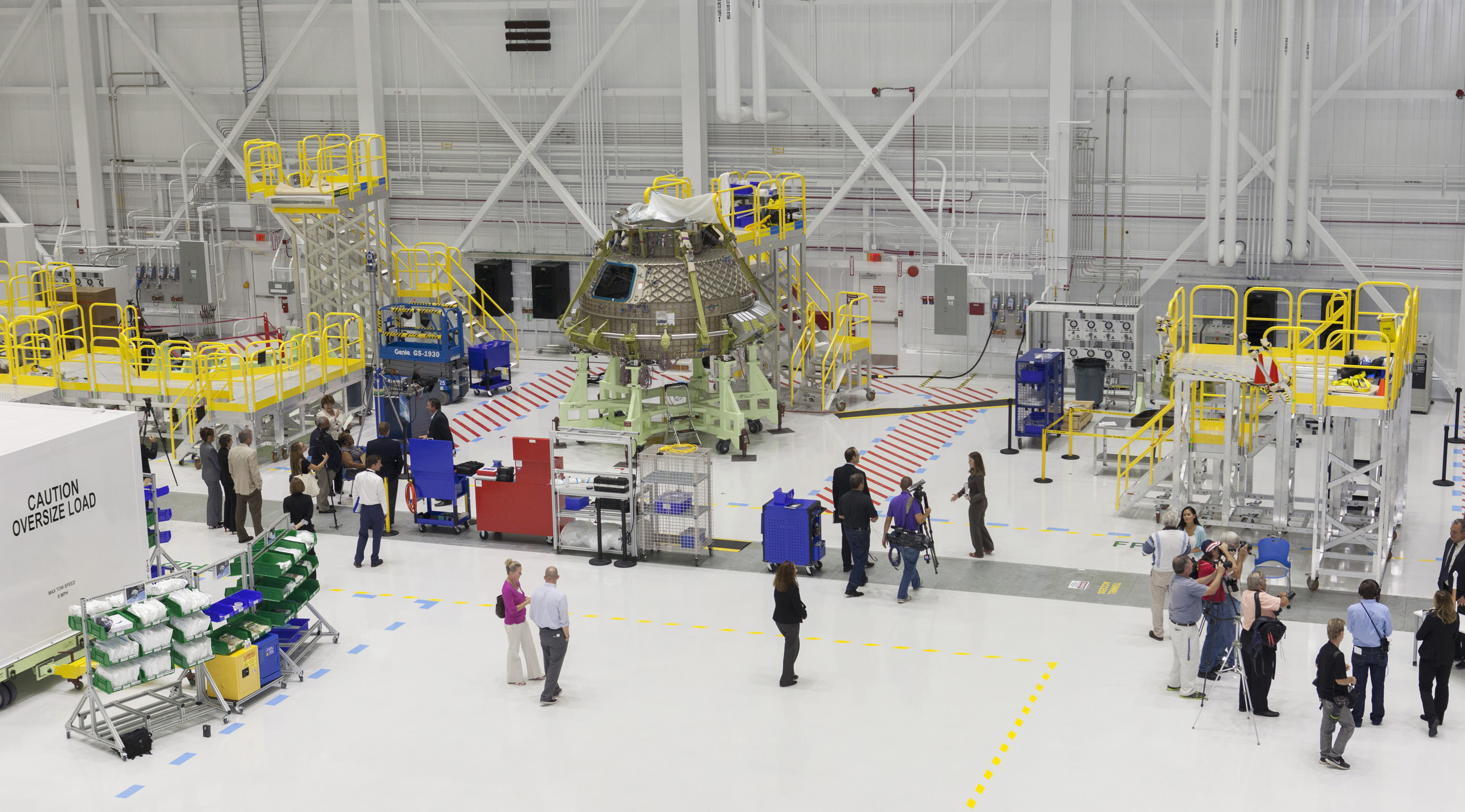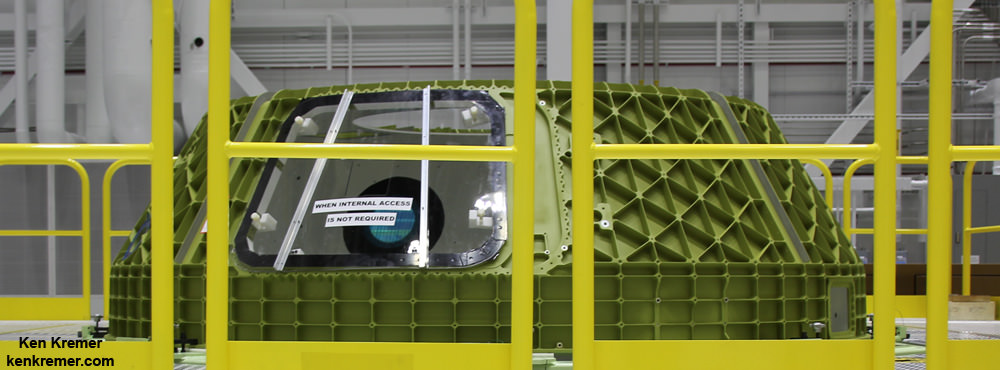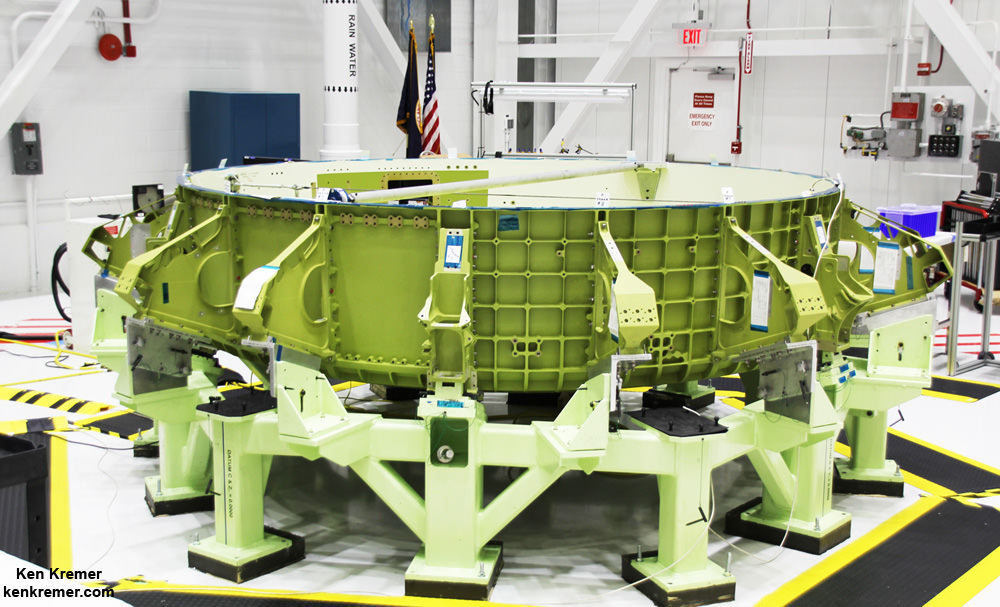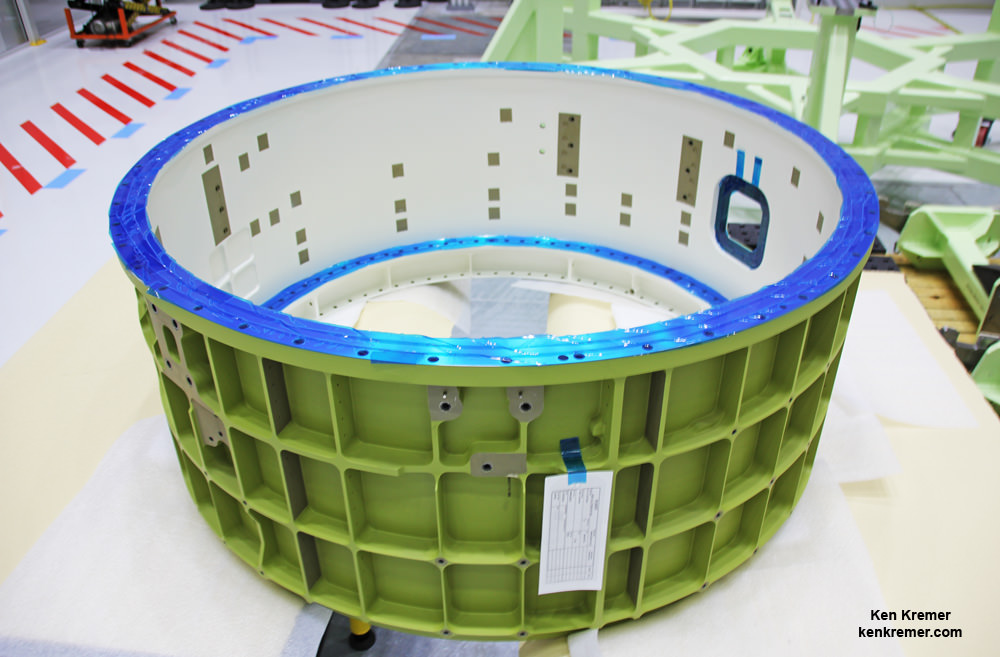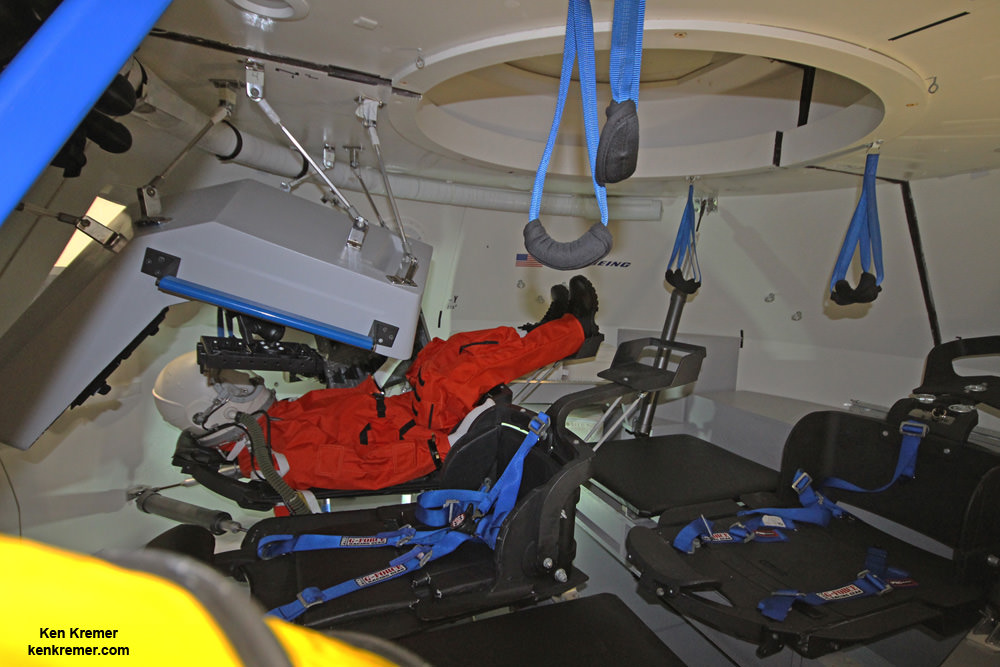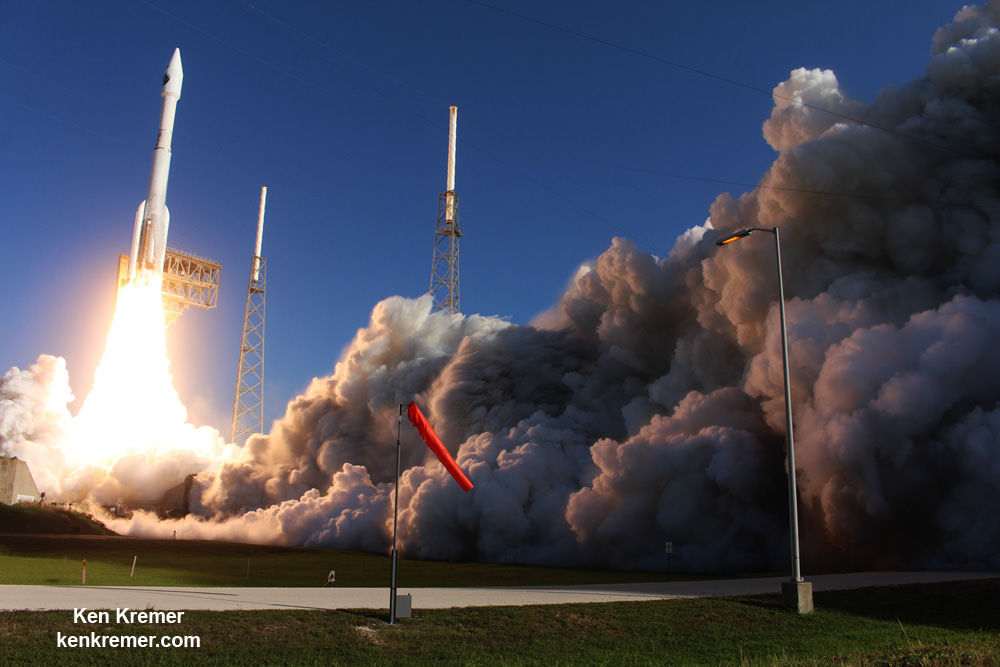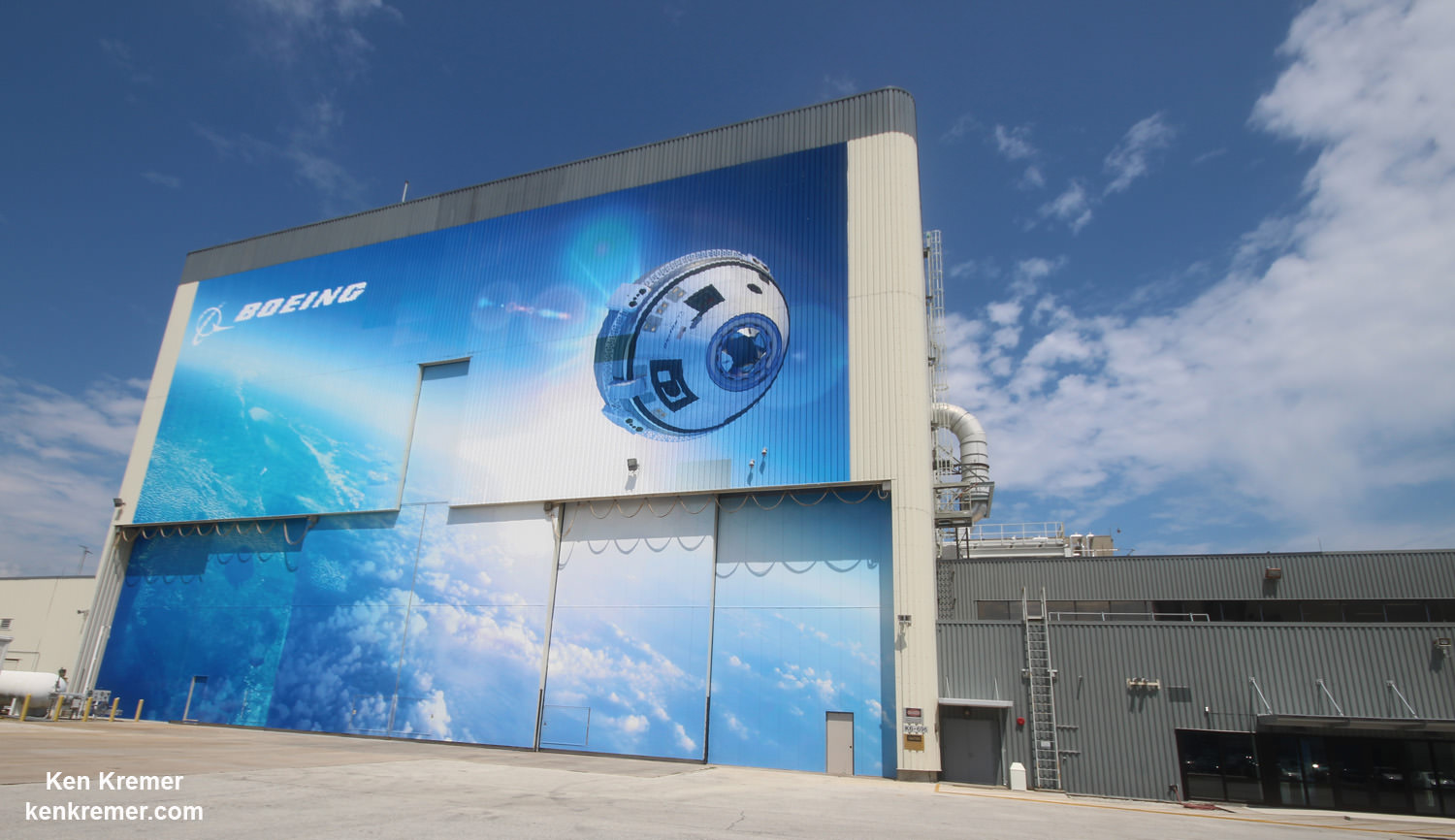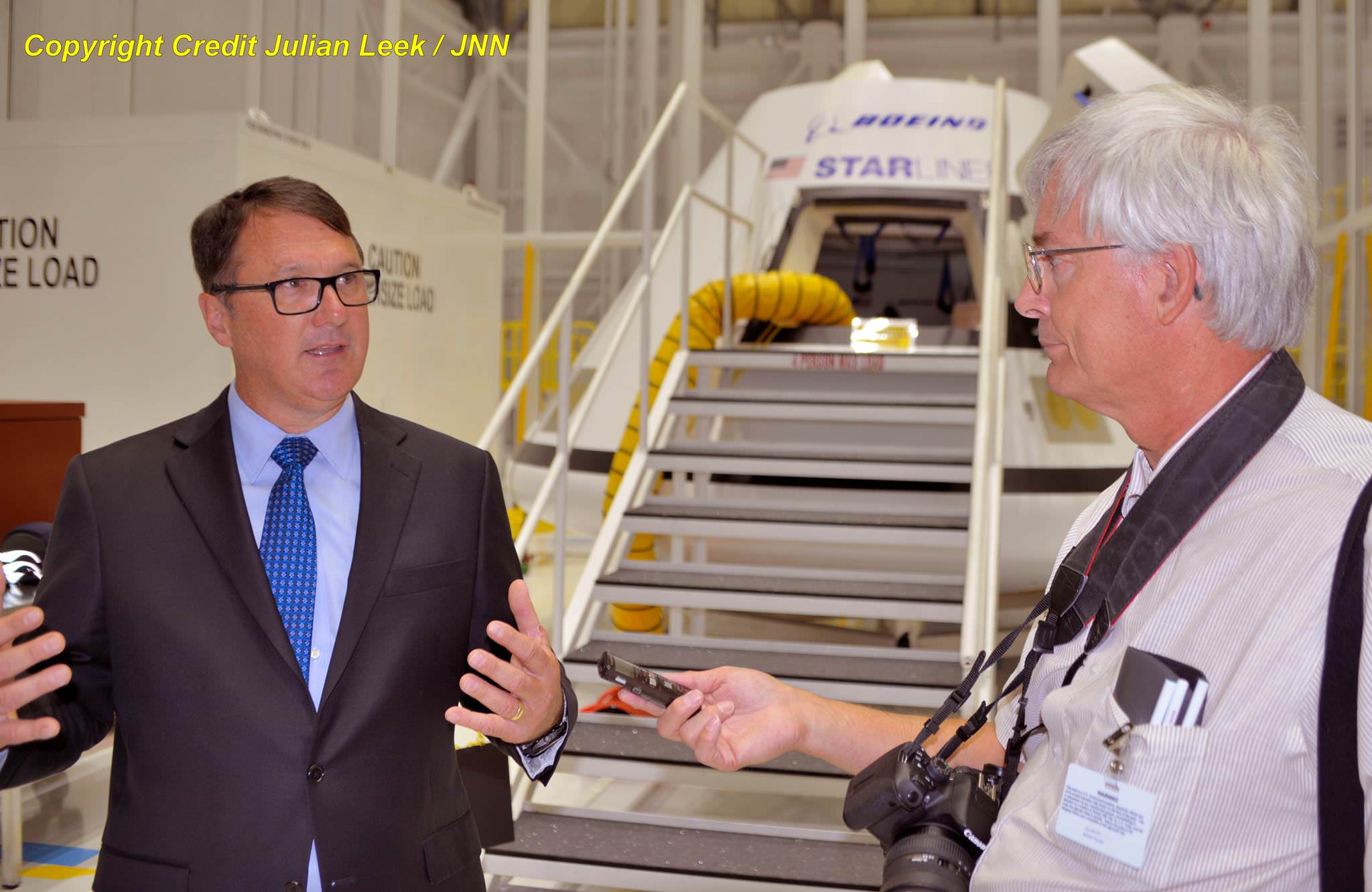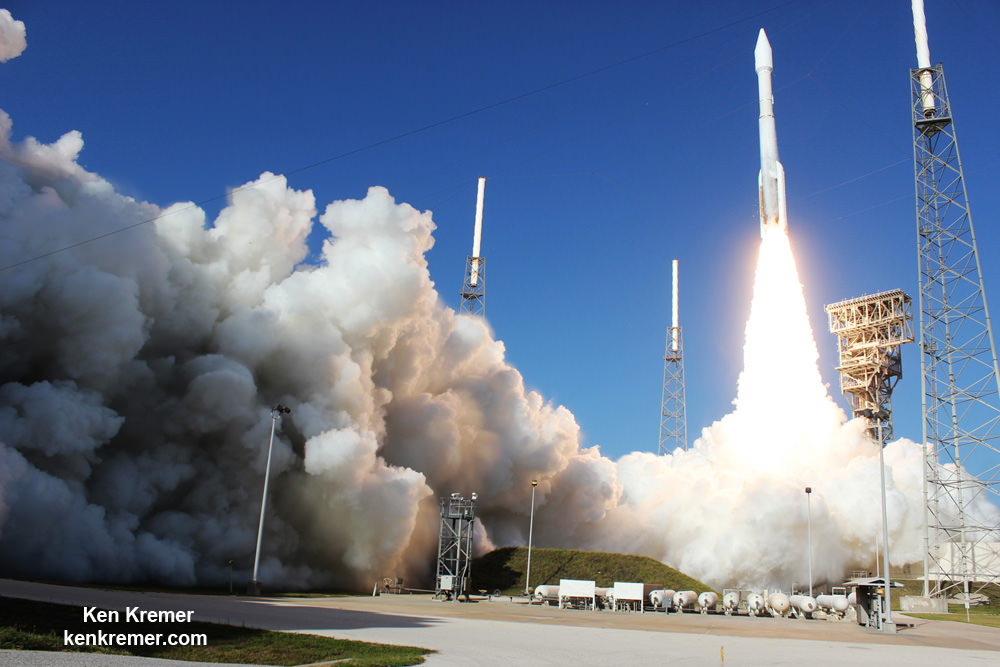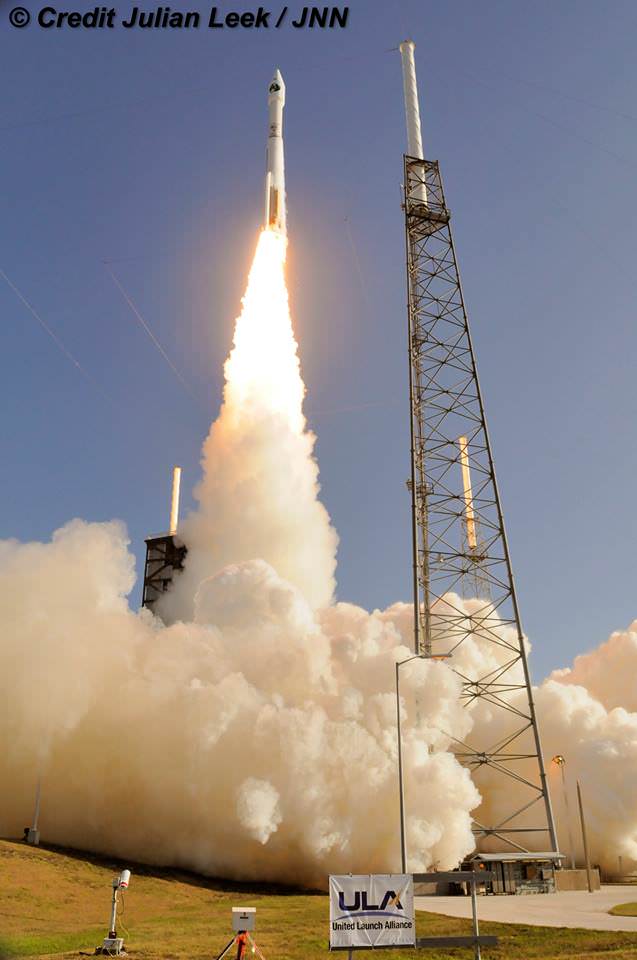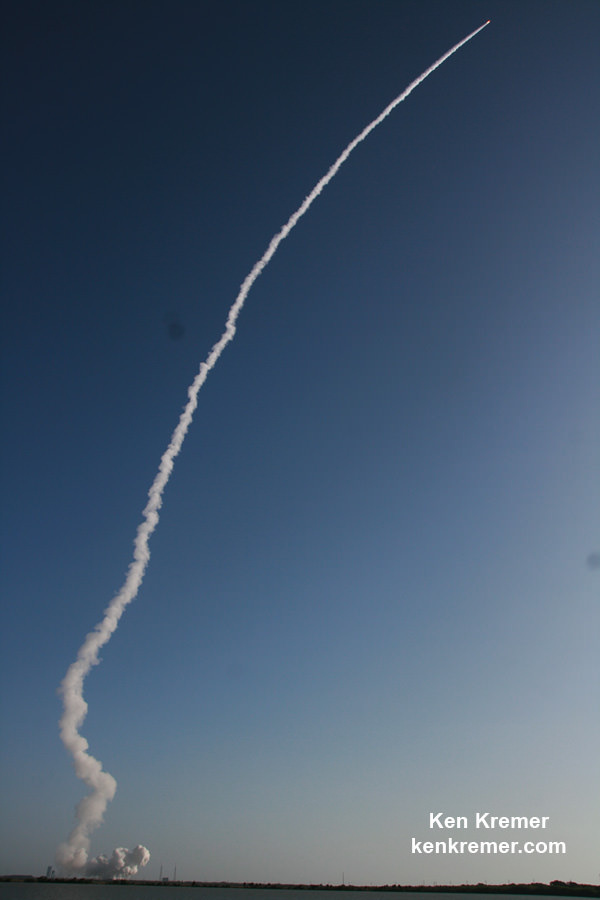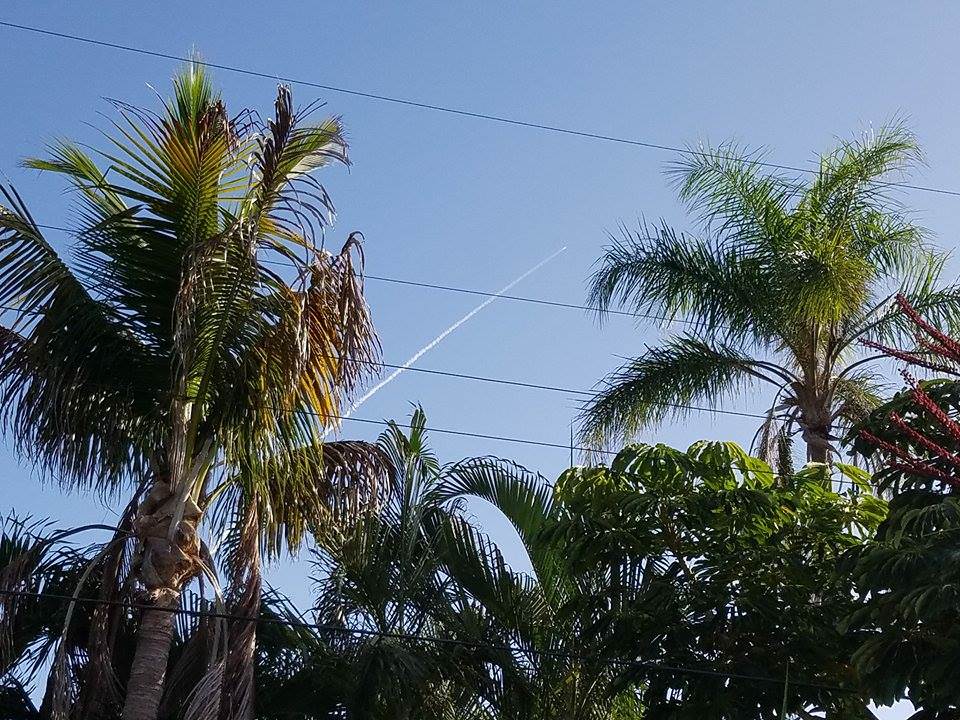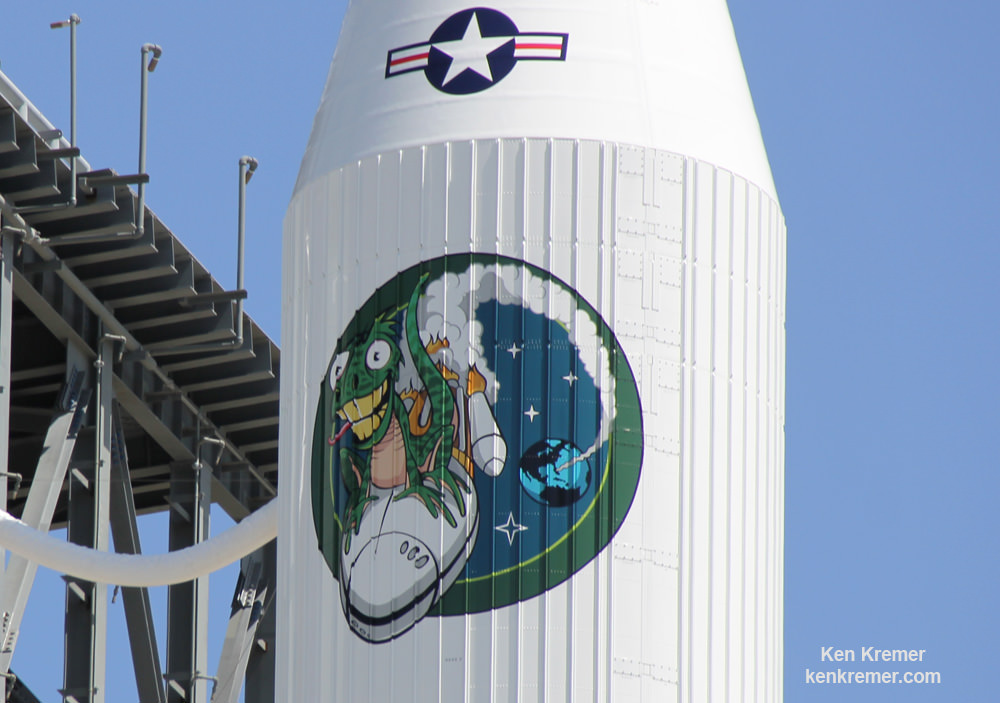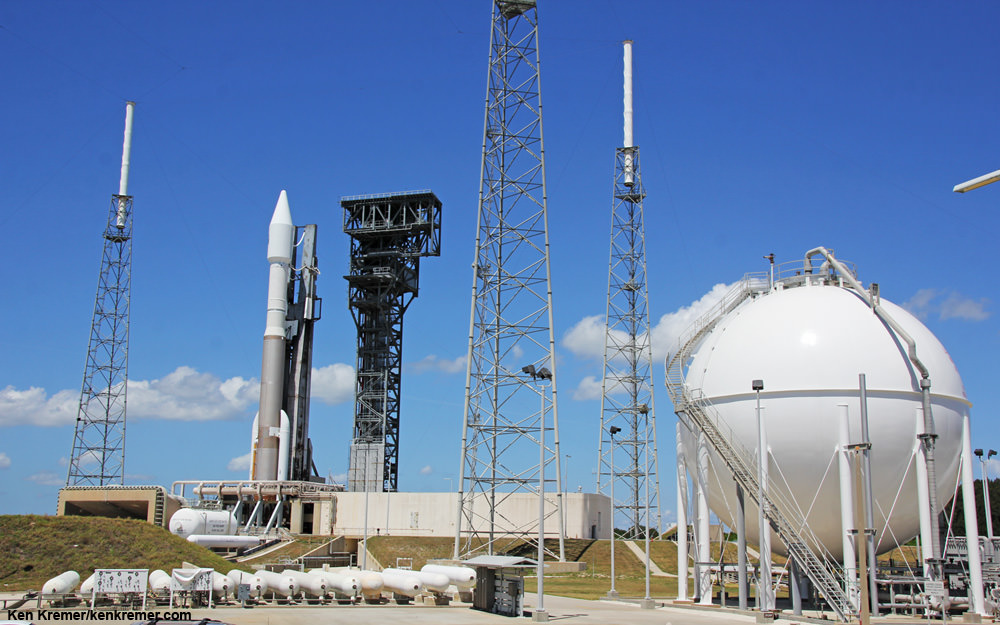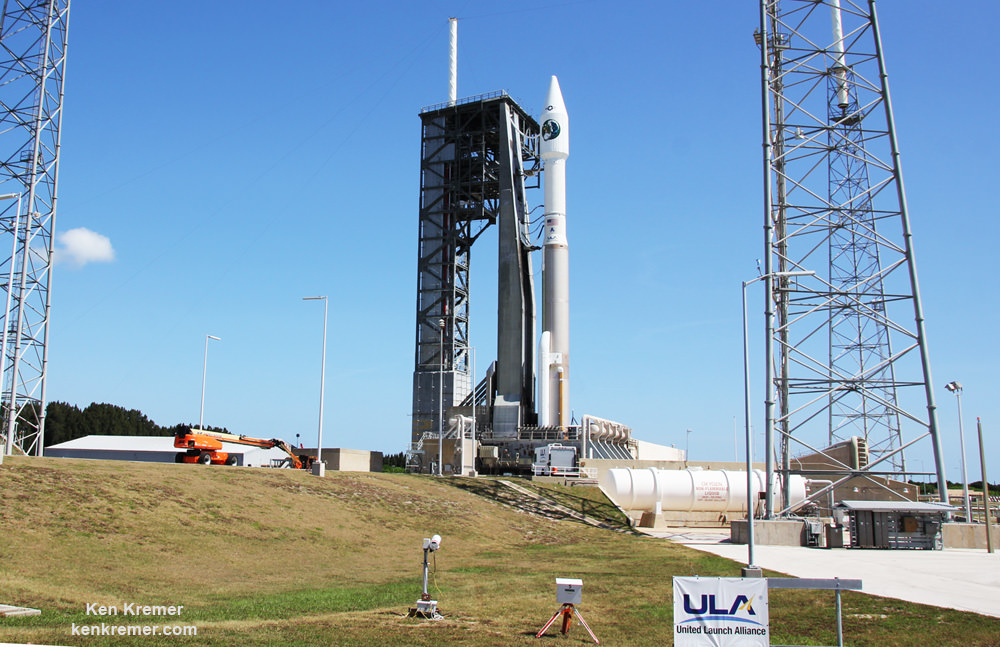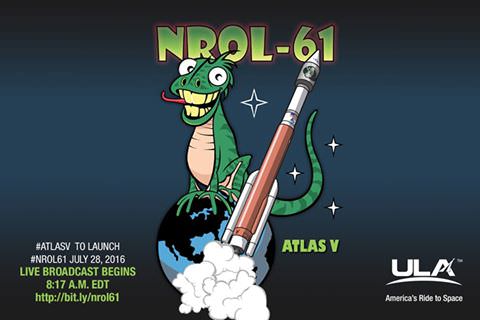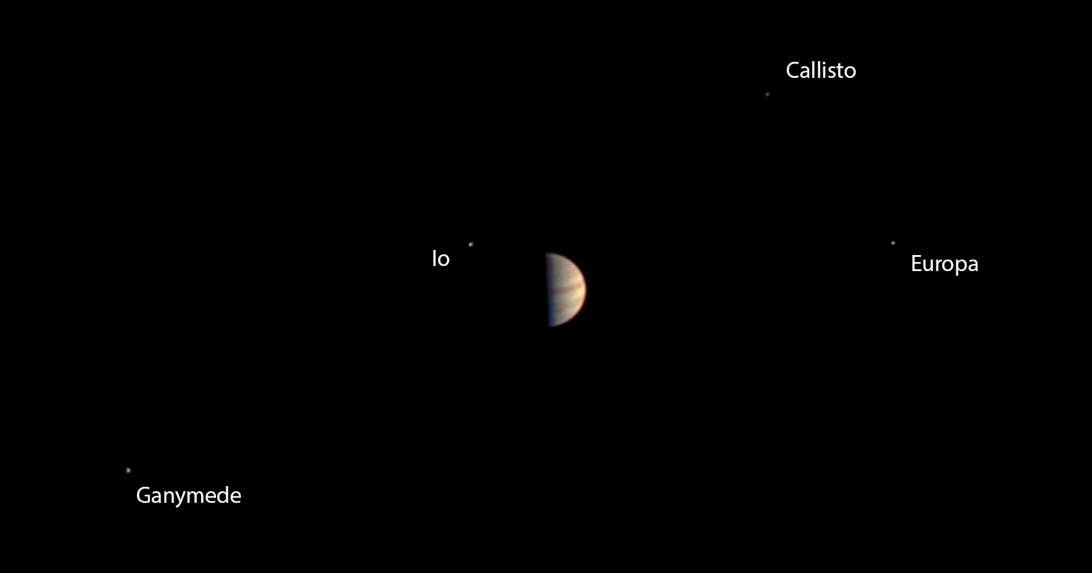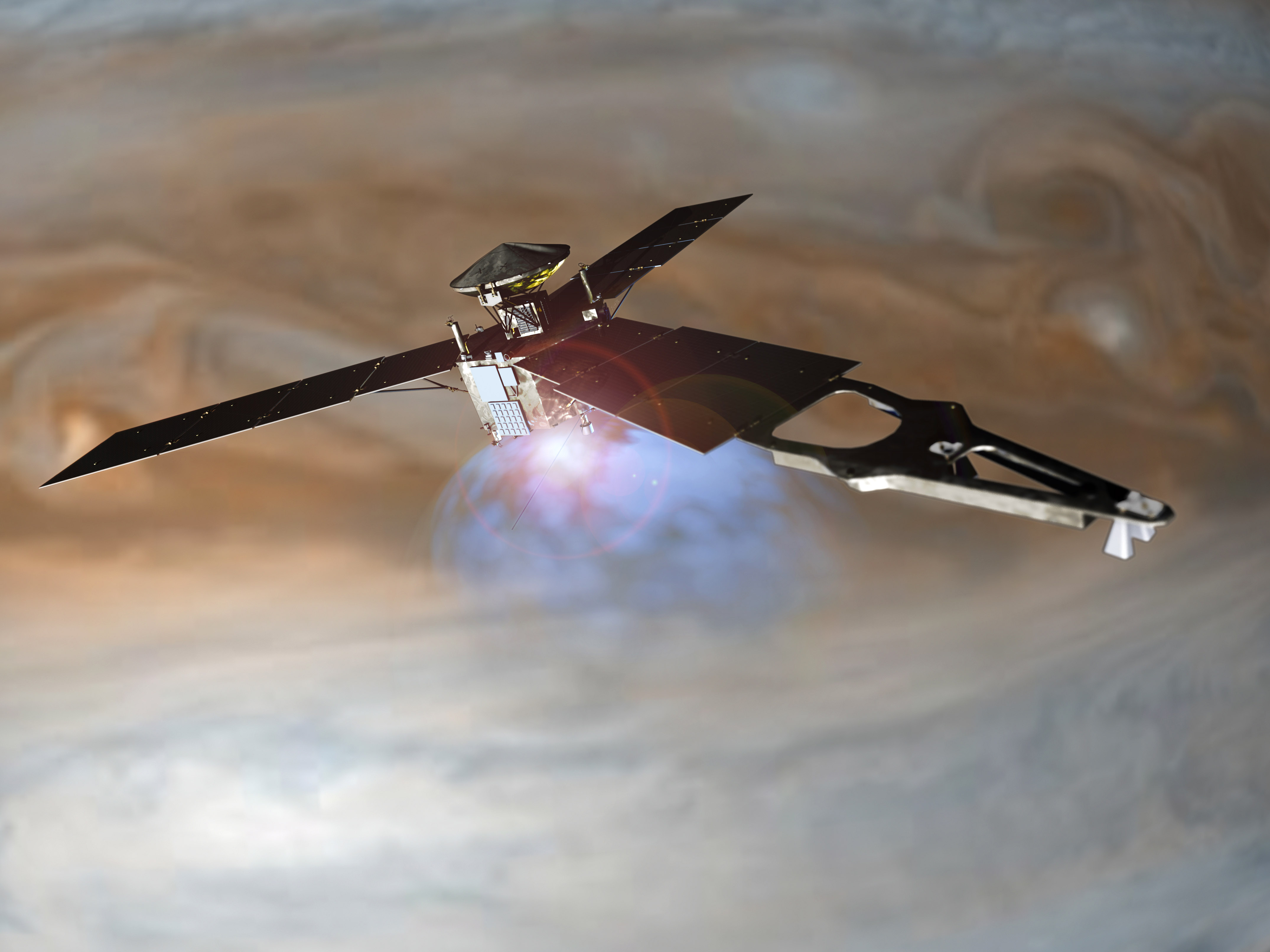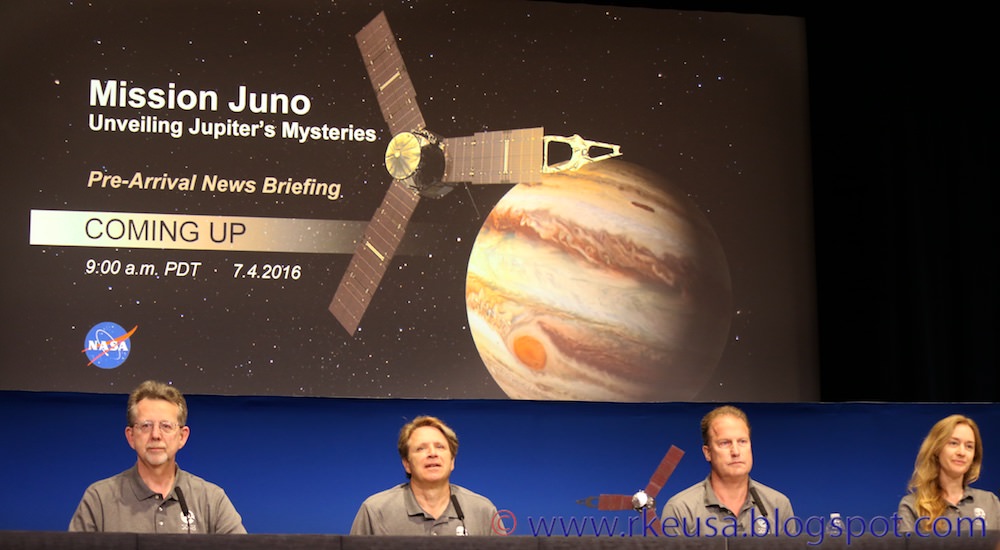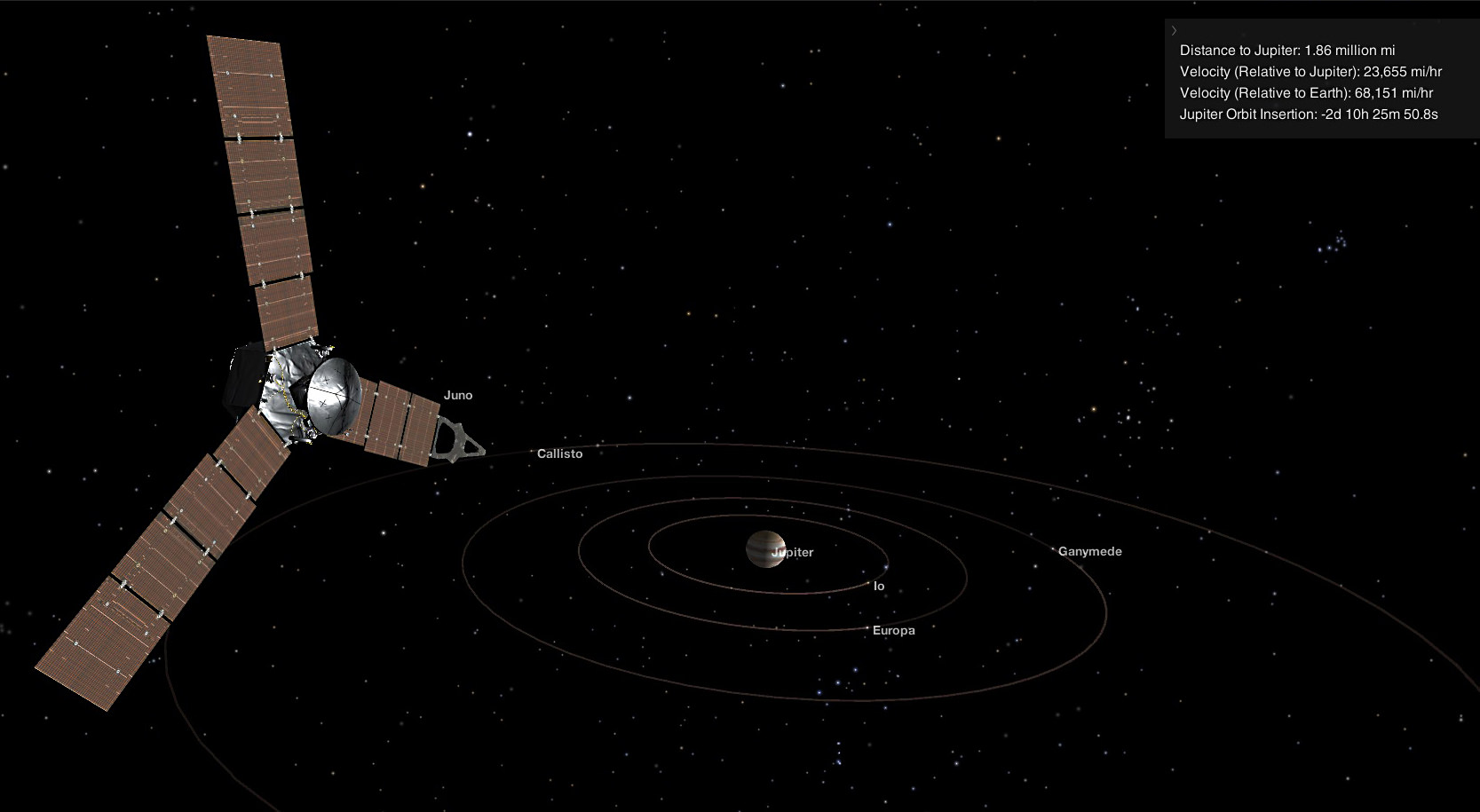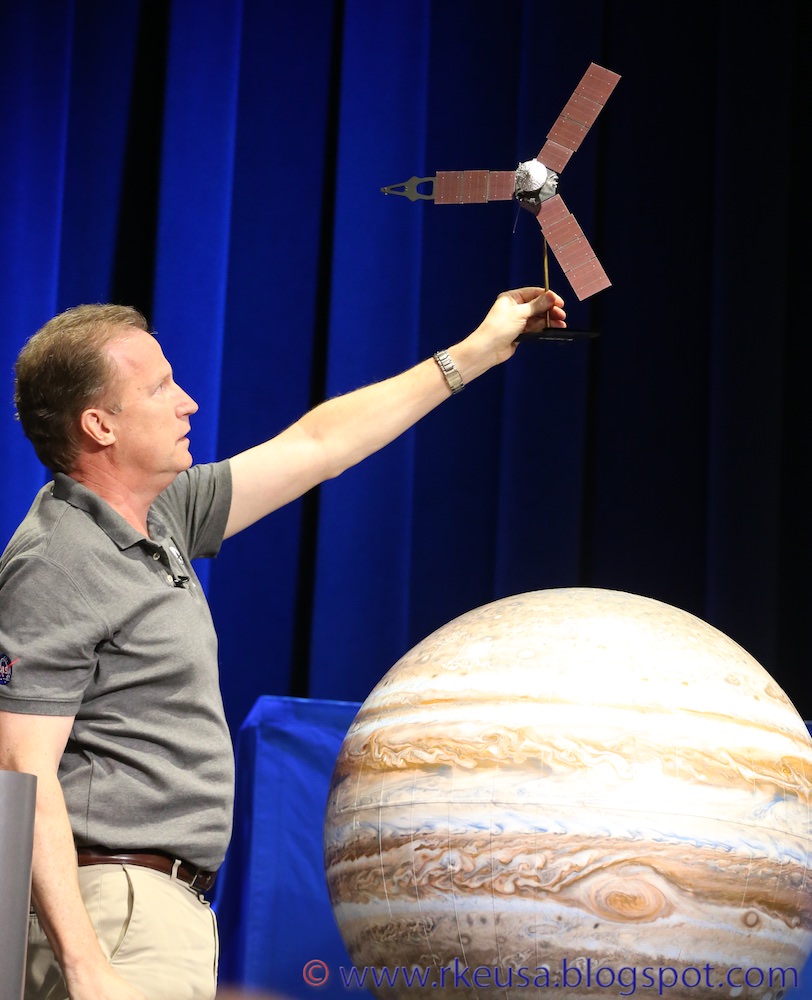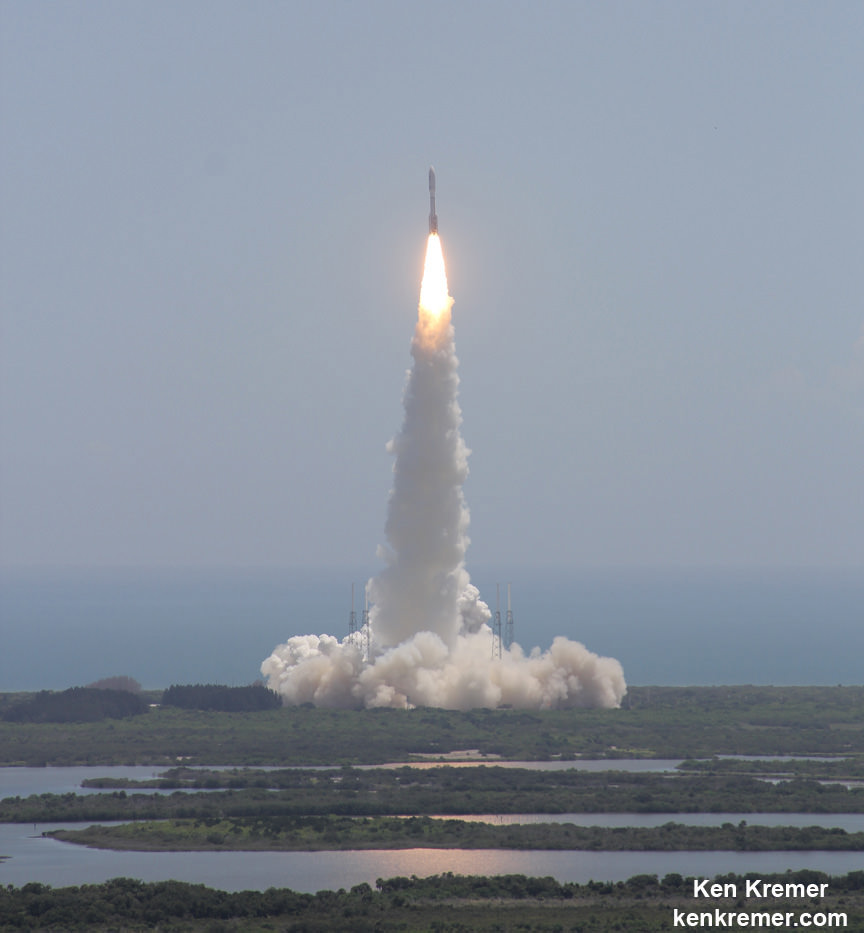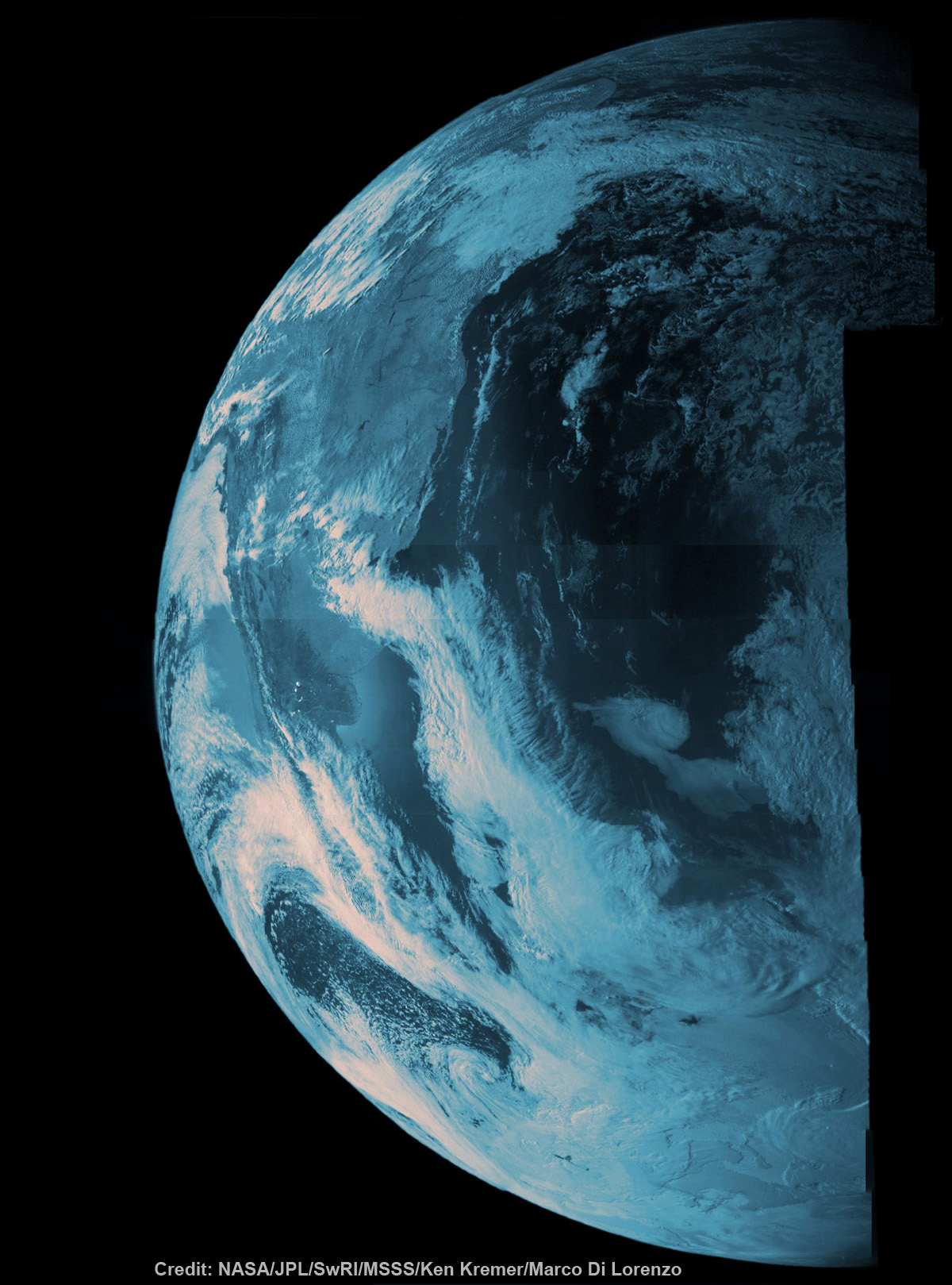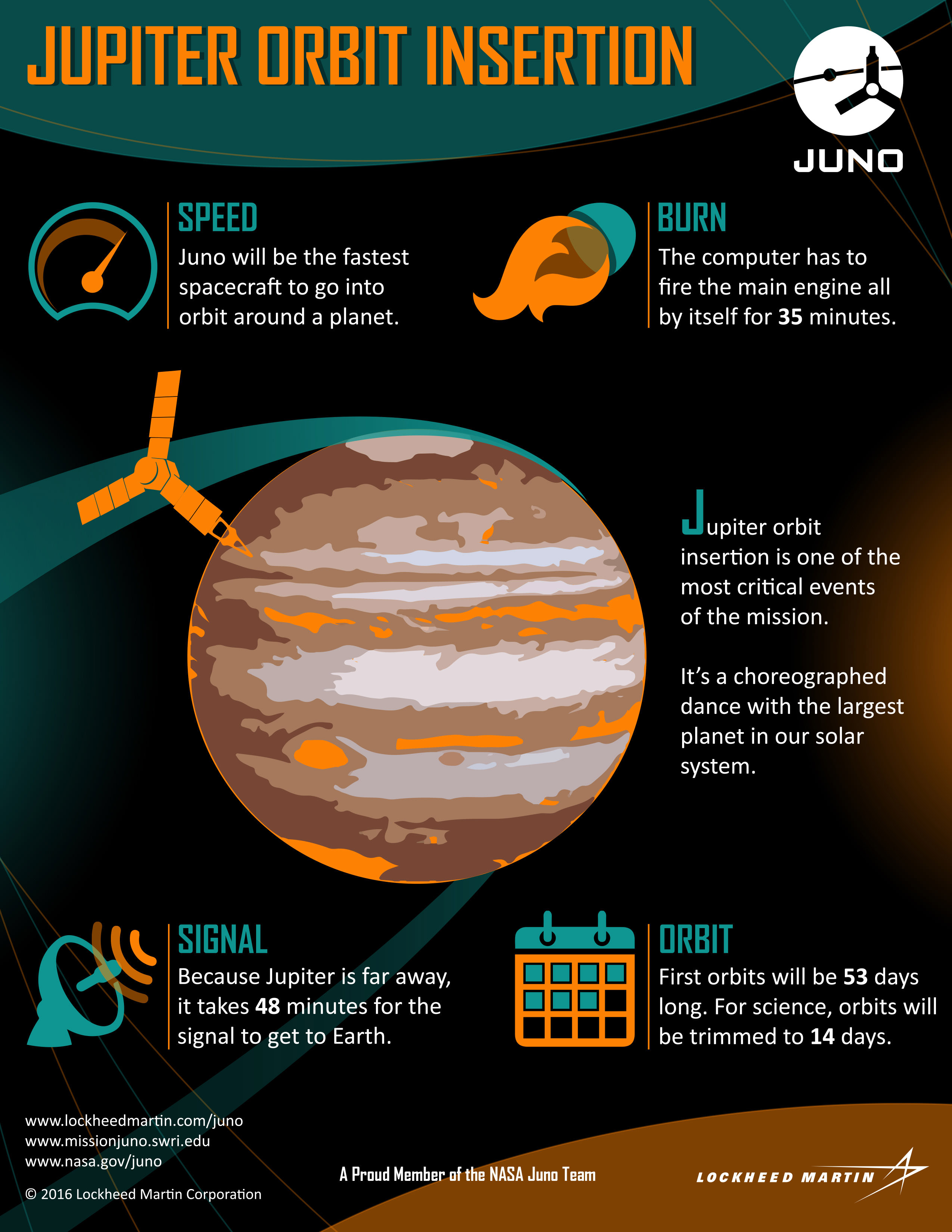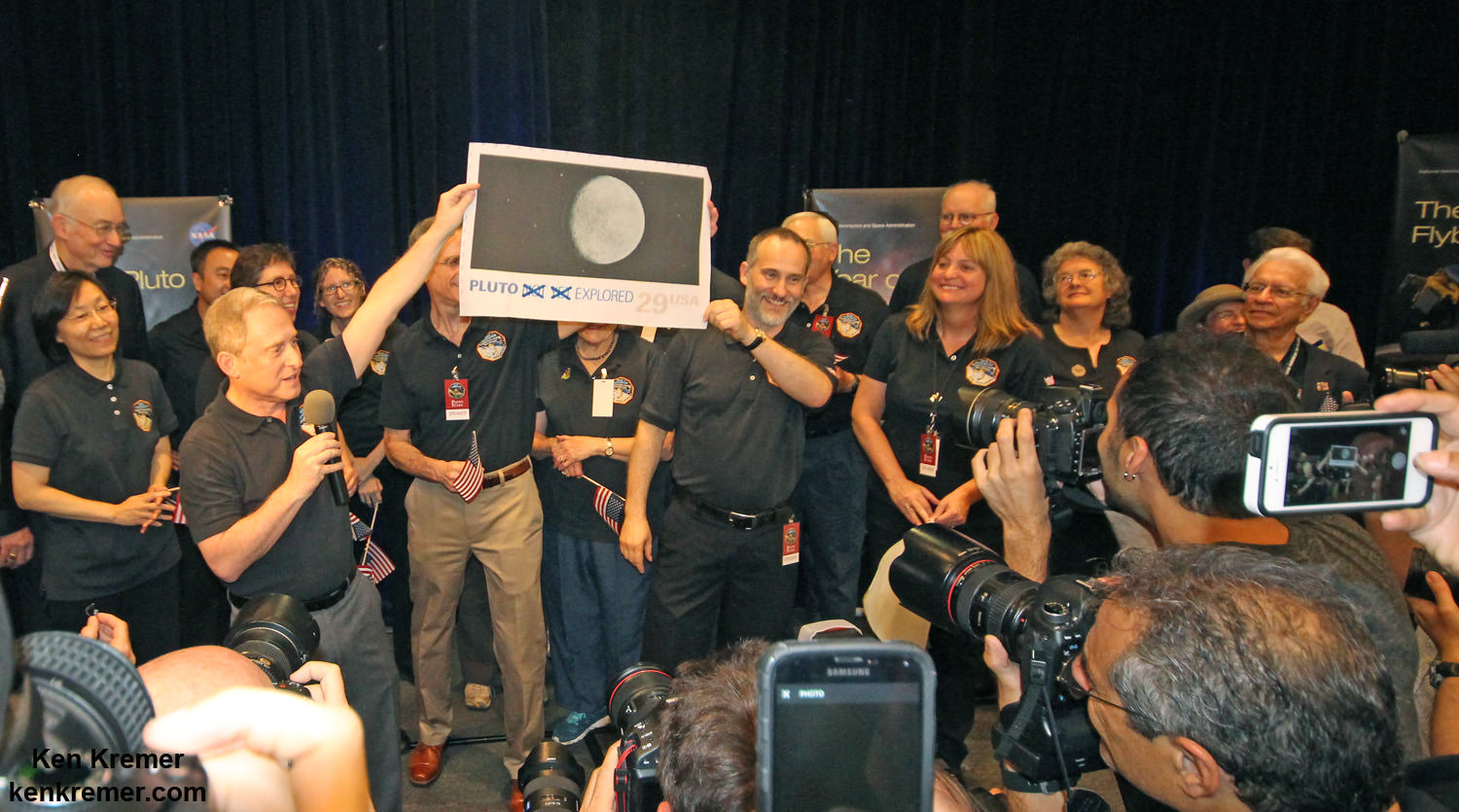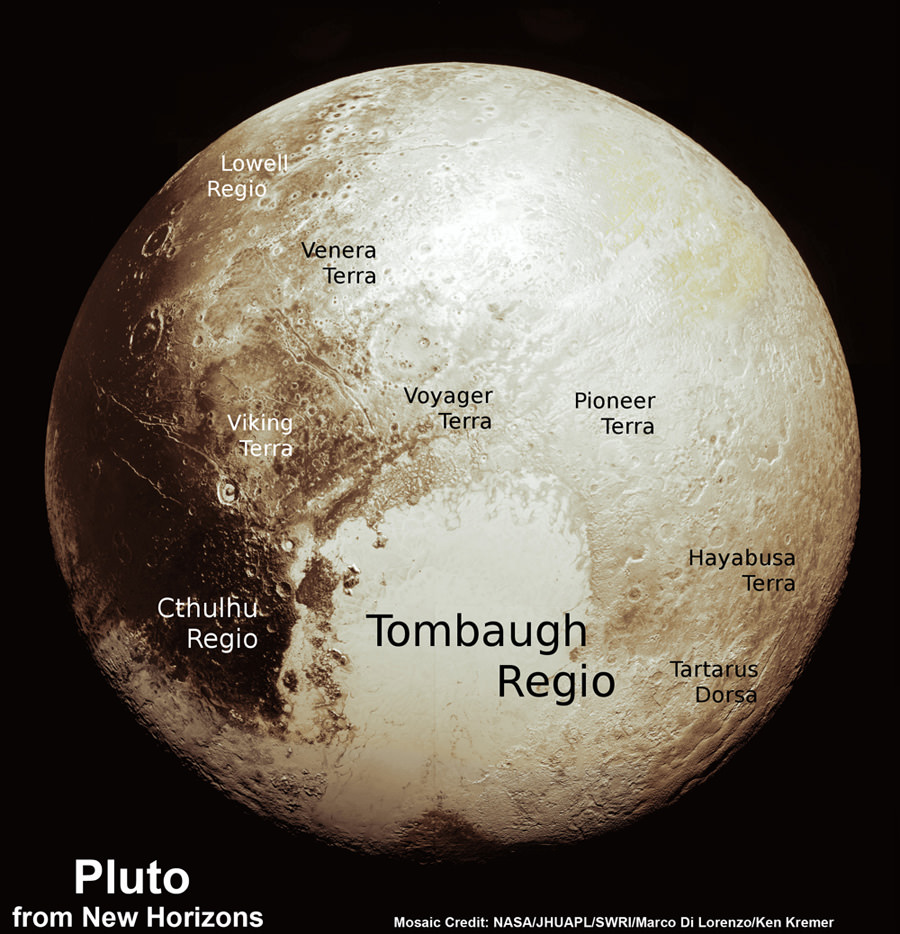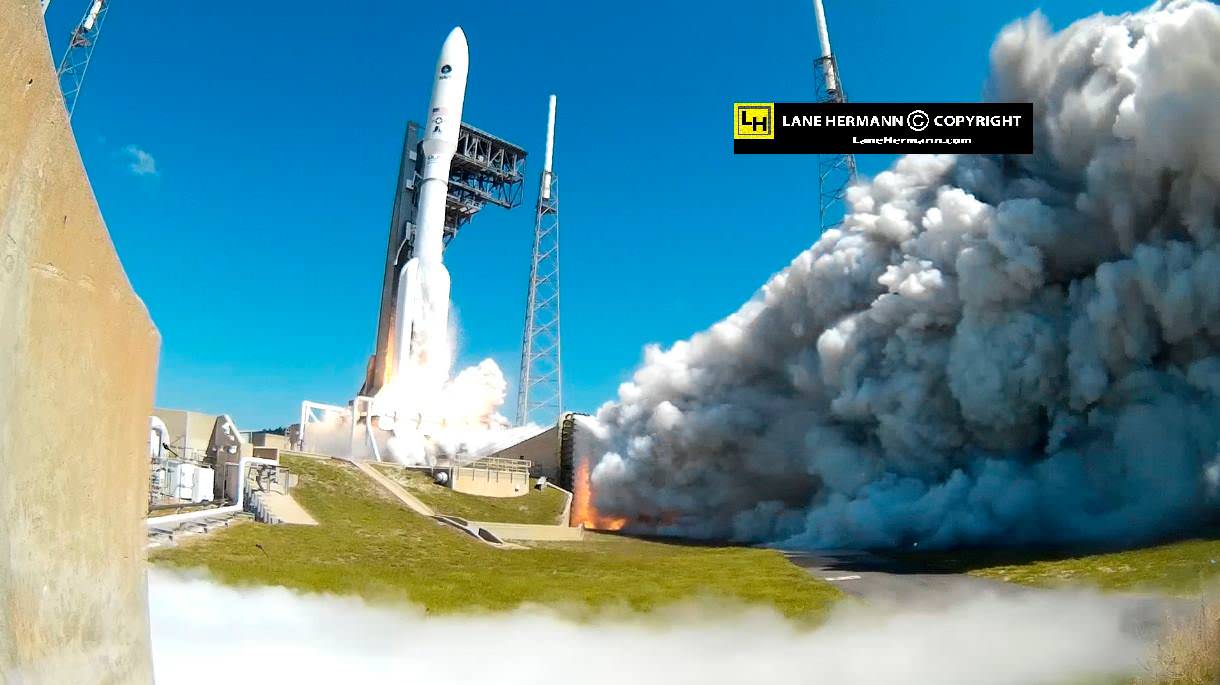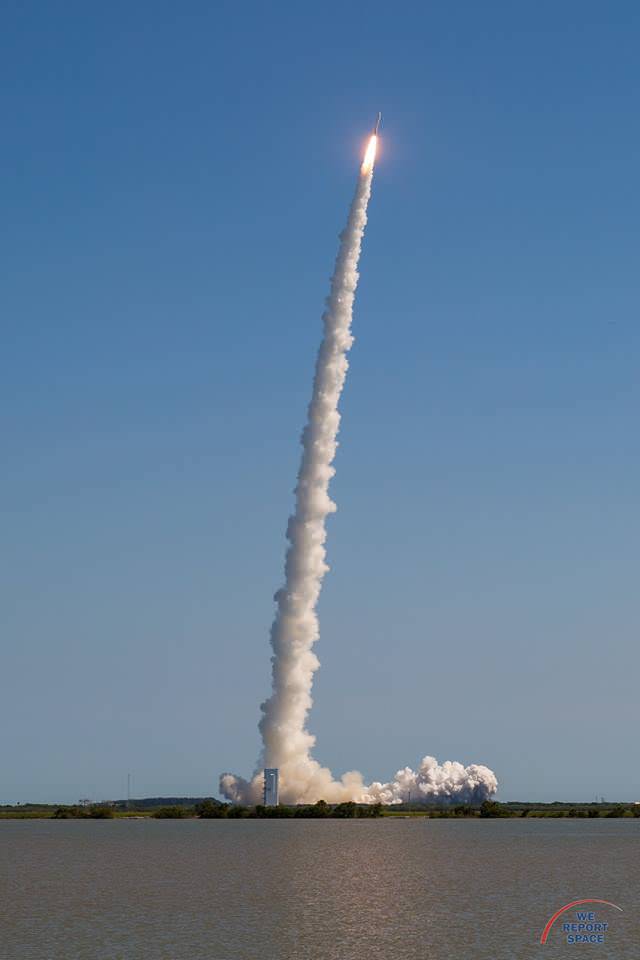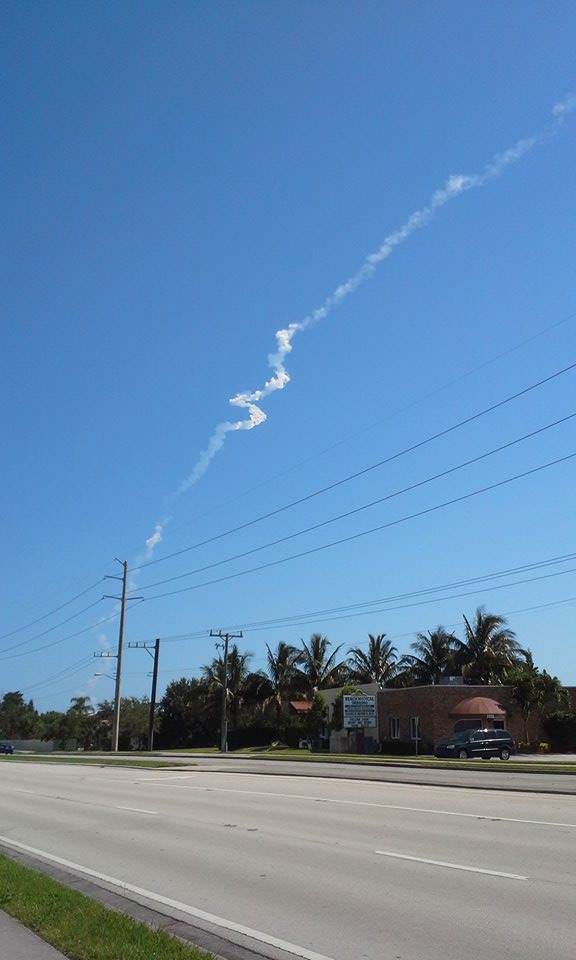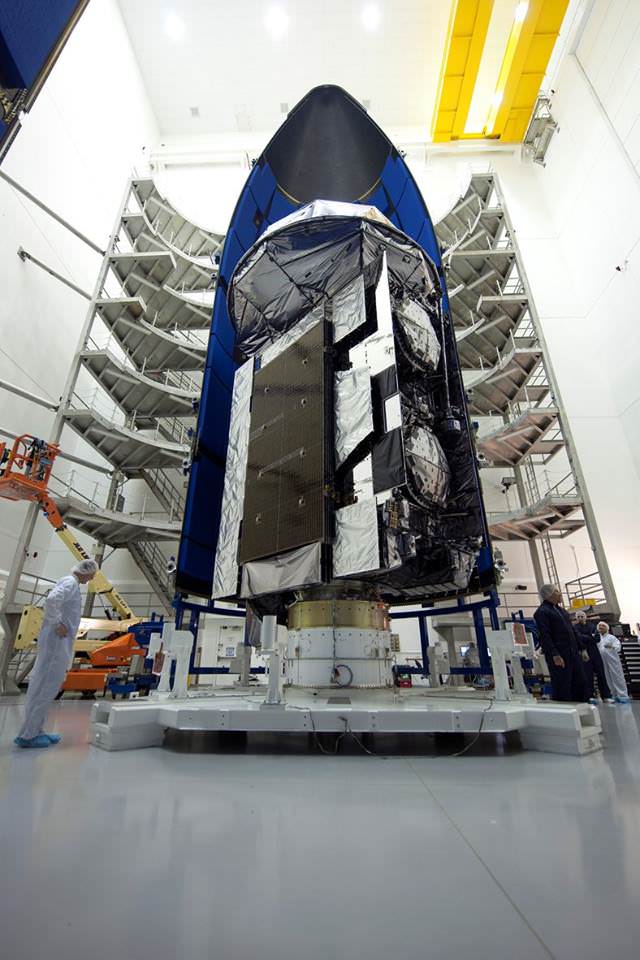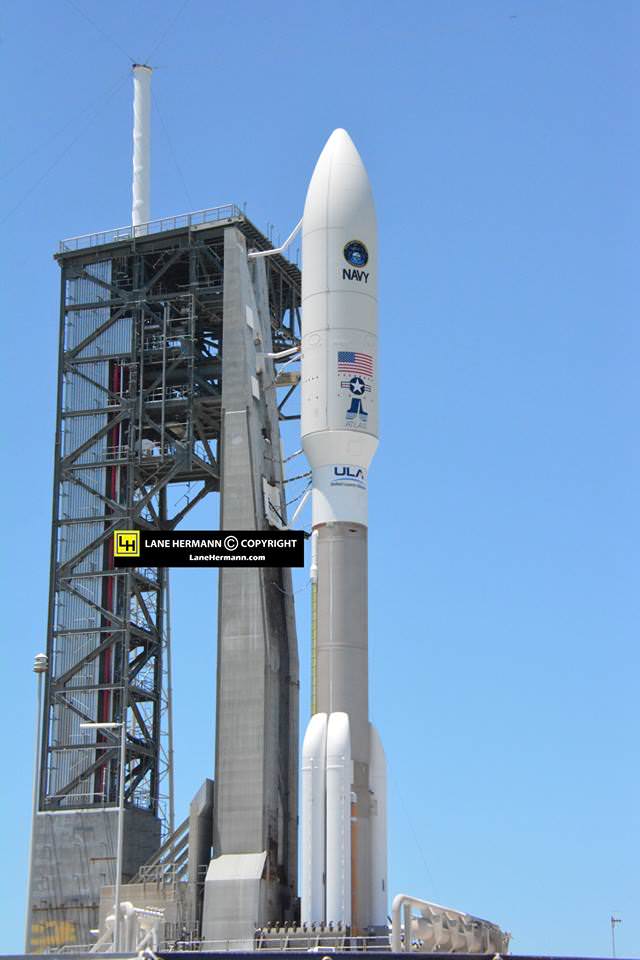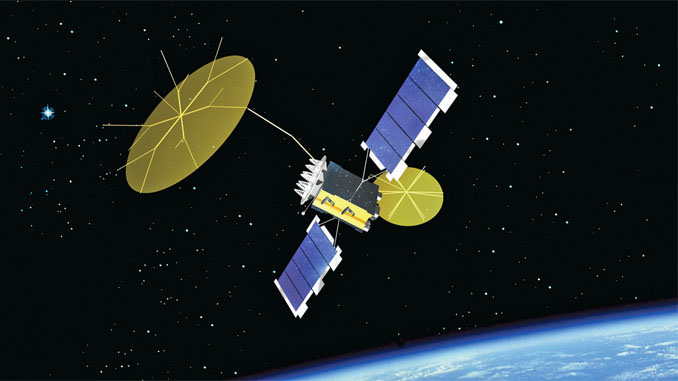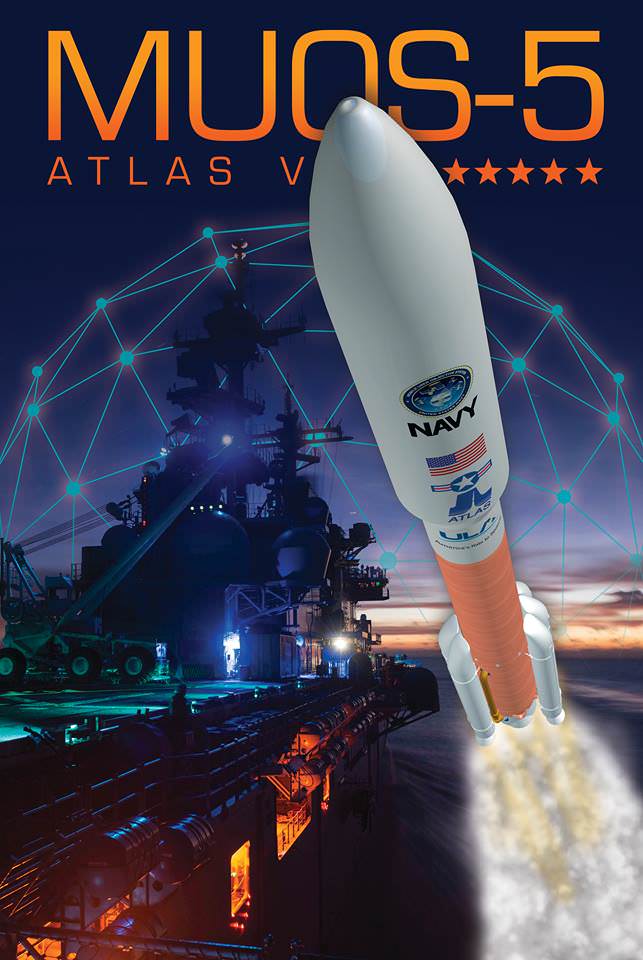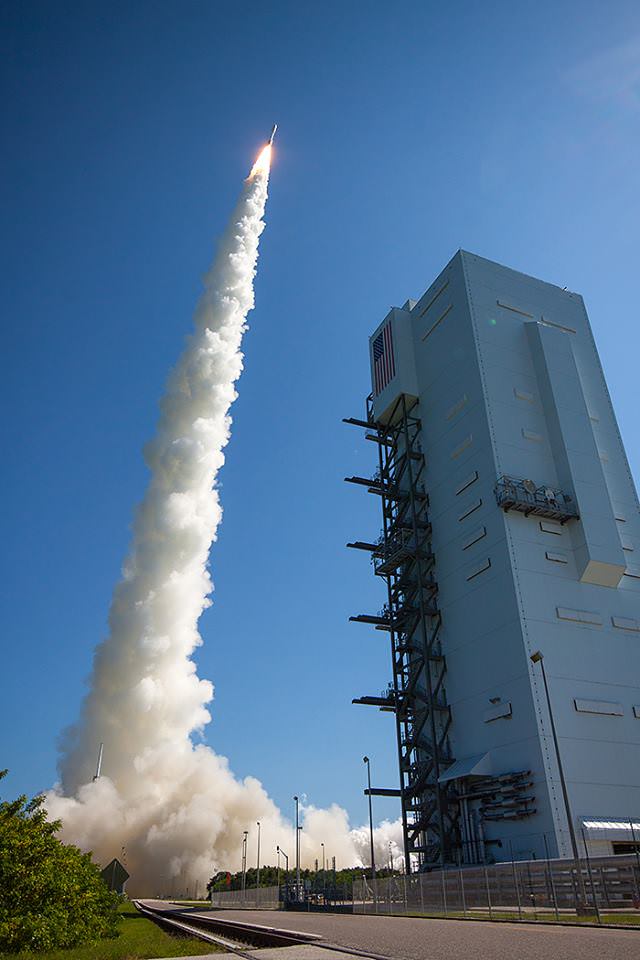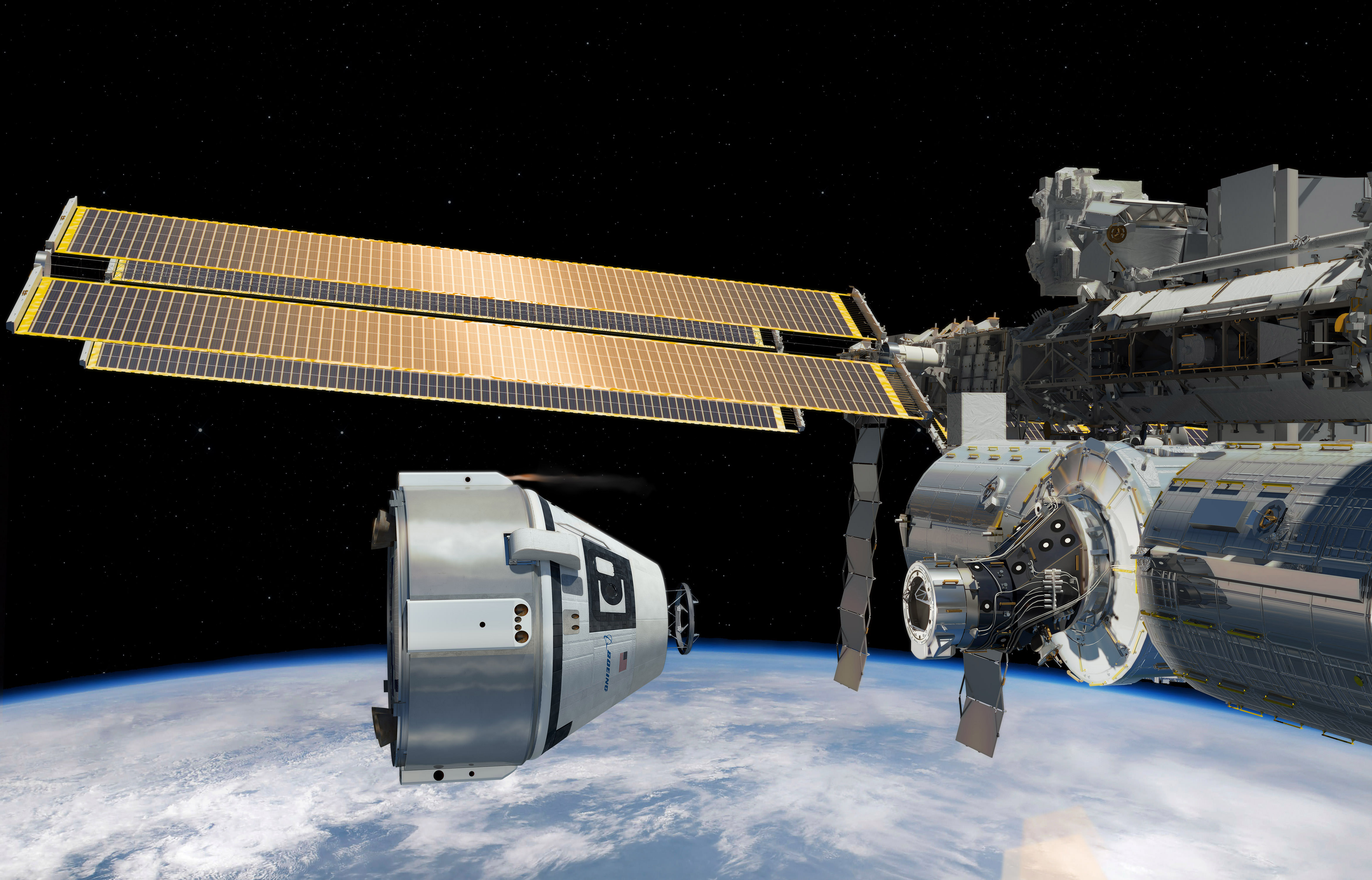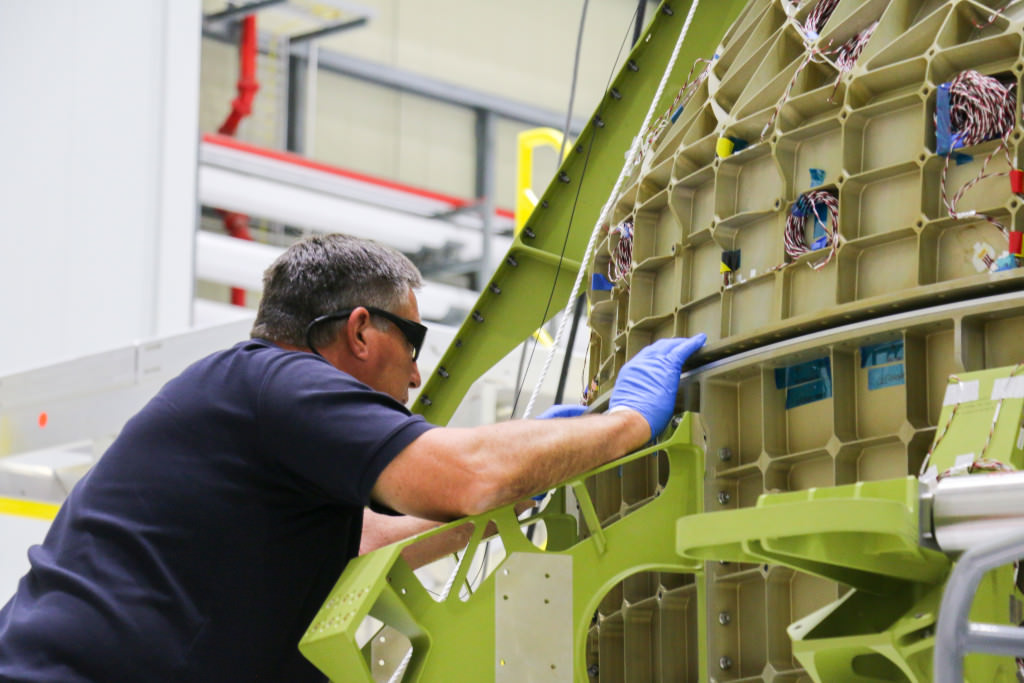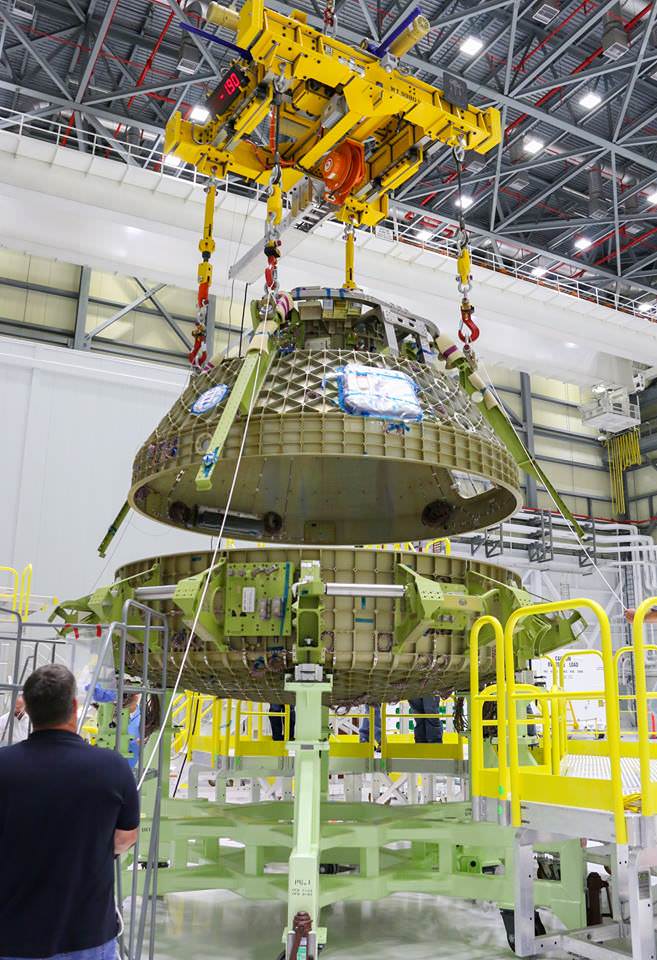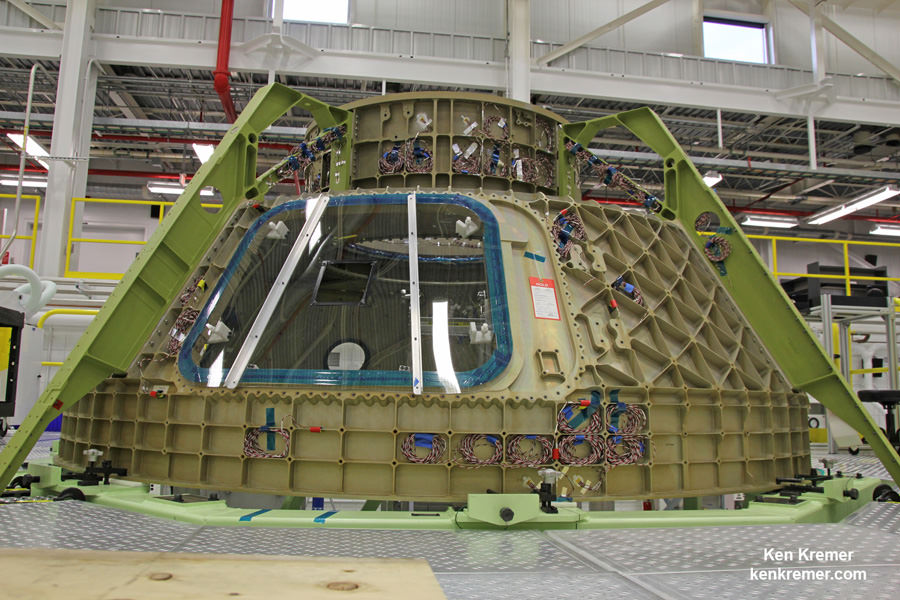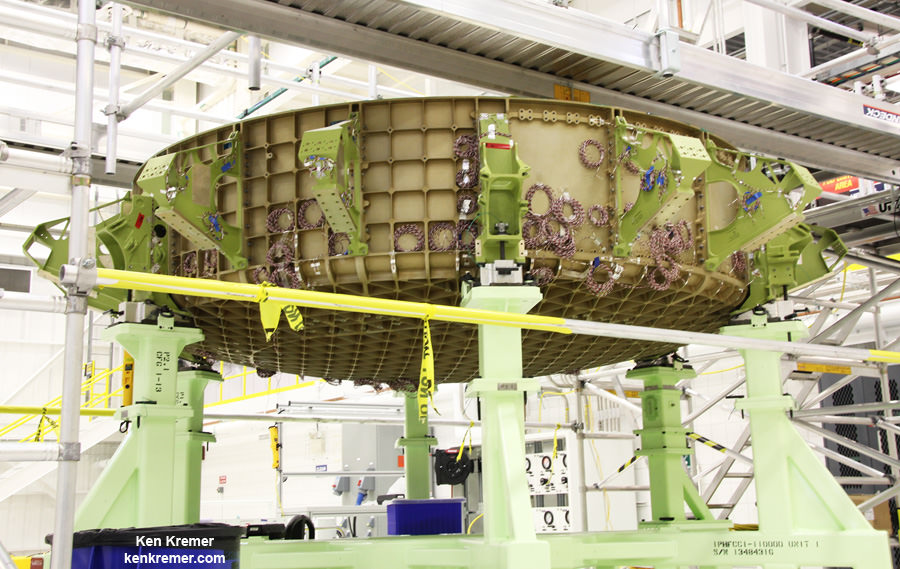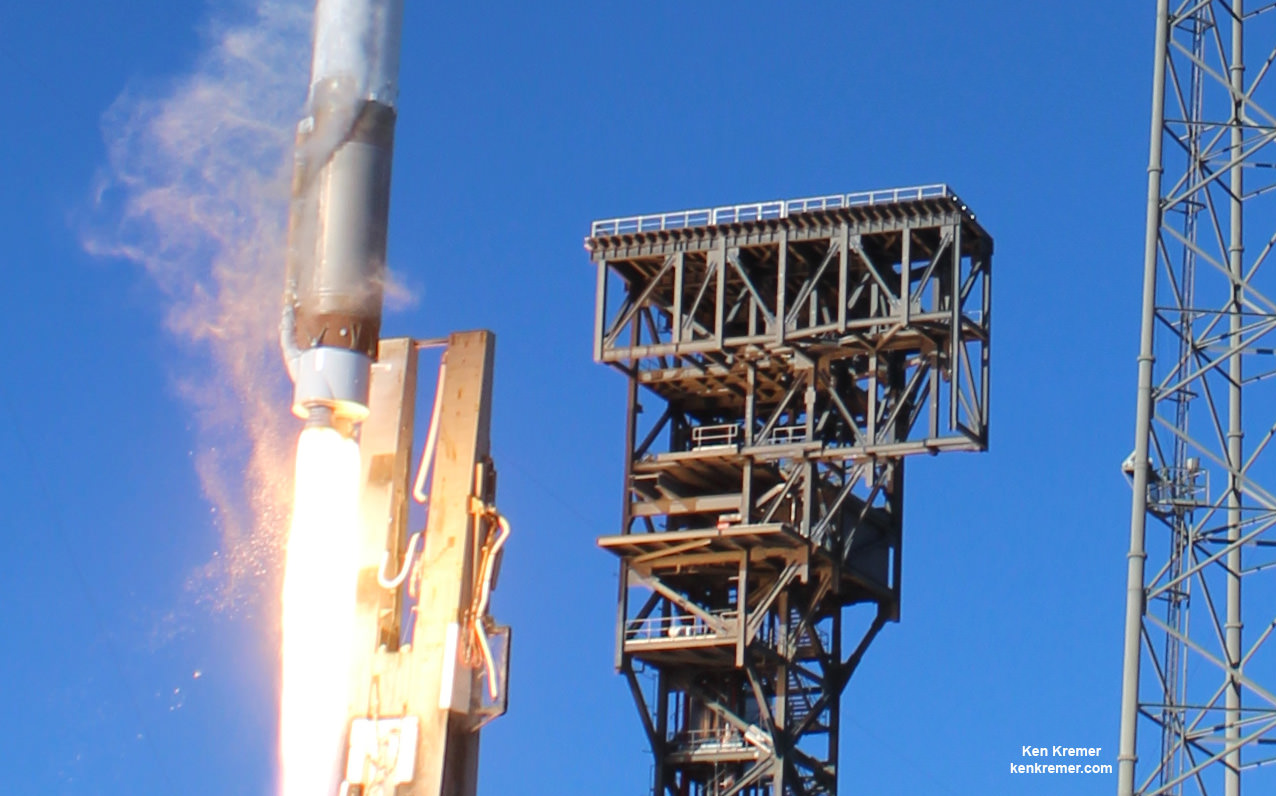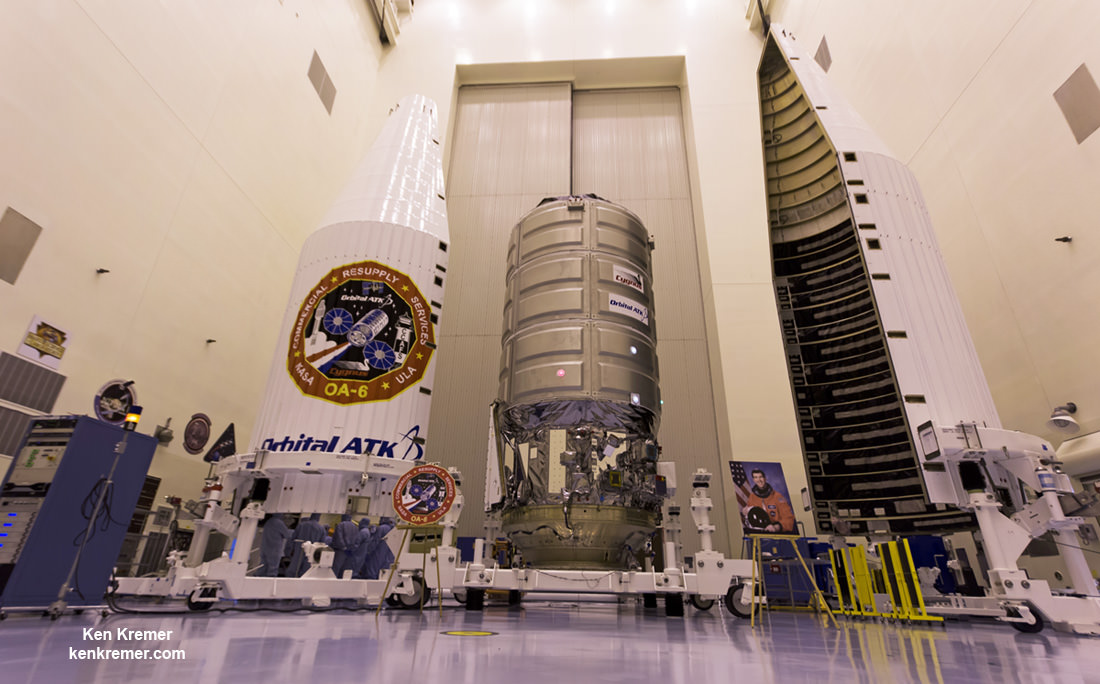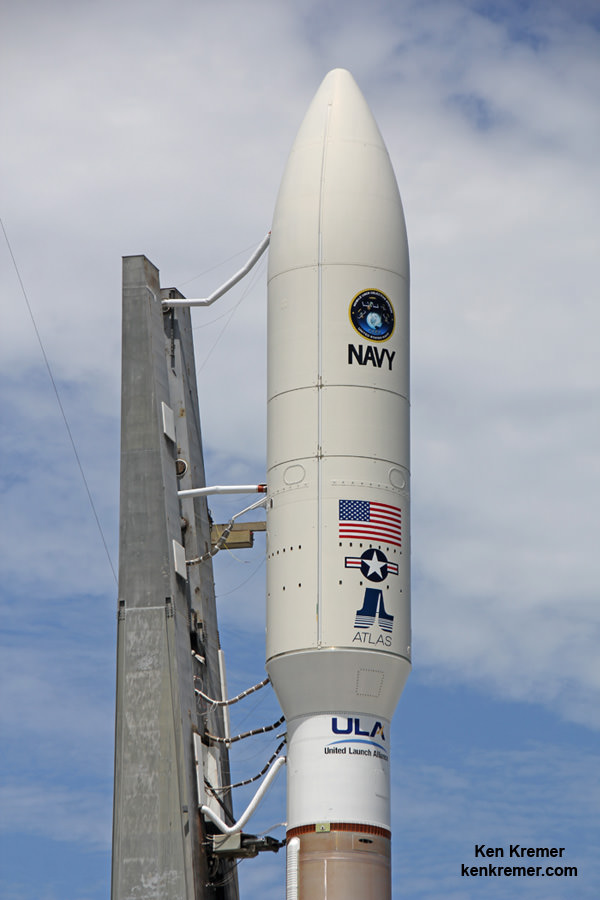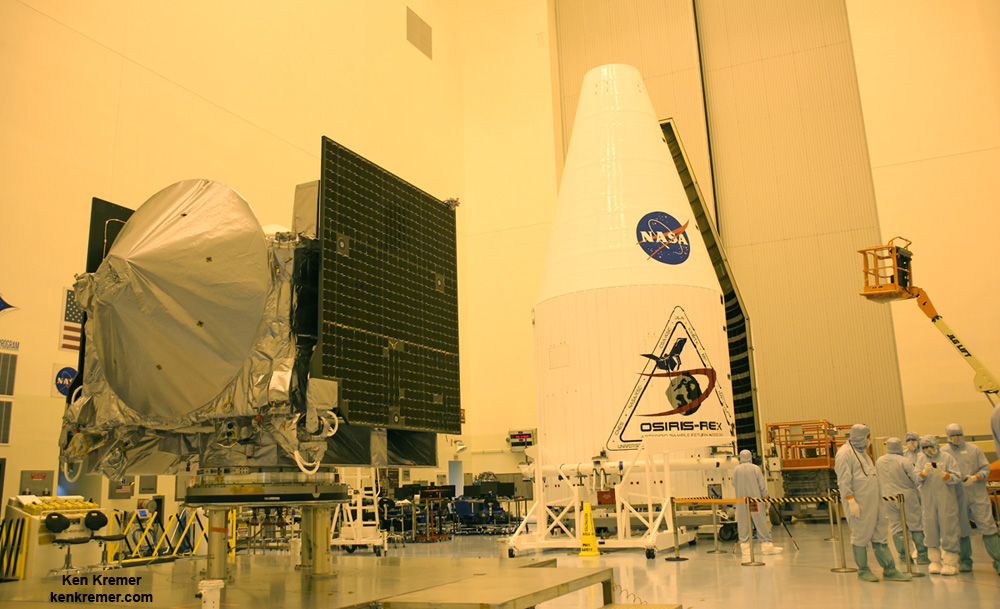
KENNEDY SPACE CENTER, FL – OSIRIS-Rex, the first American sponsored probe aimed at retrieving “pristine materials” from the surface of an asteroid and returning them to Earth has been fully assembled at its Florida launch base and is ready to blastoff ten days from today on Sep. 8. It’s a groundbreaking mission that could inform us about astrobiology and the ‘Origin of Life.’
“We are interested in that material because it is a time capsule from the earliest stages of solar system formation,” said Dante Lauretta, principal investigator for OSIRIS-REx at the University of Arizona, Tucson, in an interview with Universe Today beside the completed spacecraft inside the Payloads Hazardous Servicing Facility, or PHSF, clean room processing facility at NASA’s Kennedy Space Center in Florida.
With virtually all prelaunch processing complete, leading members of the science, engineering and launch team including Lauretta met with several members of the media, including Universe Today, inside the clean room for a last and exclusive up-close look and briefing with the one-of-its-kind $800 million Asteroid sampling probe last week.
NASA’s Origins, Spectral Interpretation, Resource Identification, Security – Regolith Explorer (OSIRIS-REx) spacecraft will launch from Space Launch Complex 41 at Cape Canaveral Air Force Station on a United Launch Alliance Atlas V rocket on September 8 at 7:05 p.m. EDT.
OSIRIS-REx goal is to fly on a roundtrip seven-year journey to the near-Earth asteroid target named Bennu and back. 101955 Bennu is a near Earth asteroid and was selected specifically because it is a carbon-rich asteroid.
While orbiting Bennu it will move in close and snatch pristine soil samples containing organic materials from the surface using the TAGSAM collection dish, and bring them back to Earth for study by researchers using all of the most sophisticated science instruments available to humankind.
“The primary objective of the OSIRIS-Rex mission is to bring back pristine material from the surface of the carbonaceous asteroid Bennu, OSIRIS-Rex Principal Investigator Dante Lauretta told Universe Today in the PHSF, as the probe was undergoing final preparation for shipment to the launch pad.
“It records the very first material that formed from the earliest stages of solar system formation. And we are really interested in the evolution of carbon during that phase. Particularly the key prebiotic molecules like amino acids, nucleic acids, phosphates and sugars that build up. These are basically the biomolecules for all of life.”
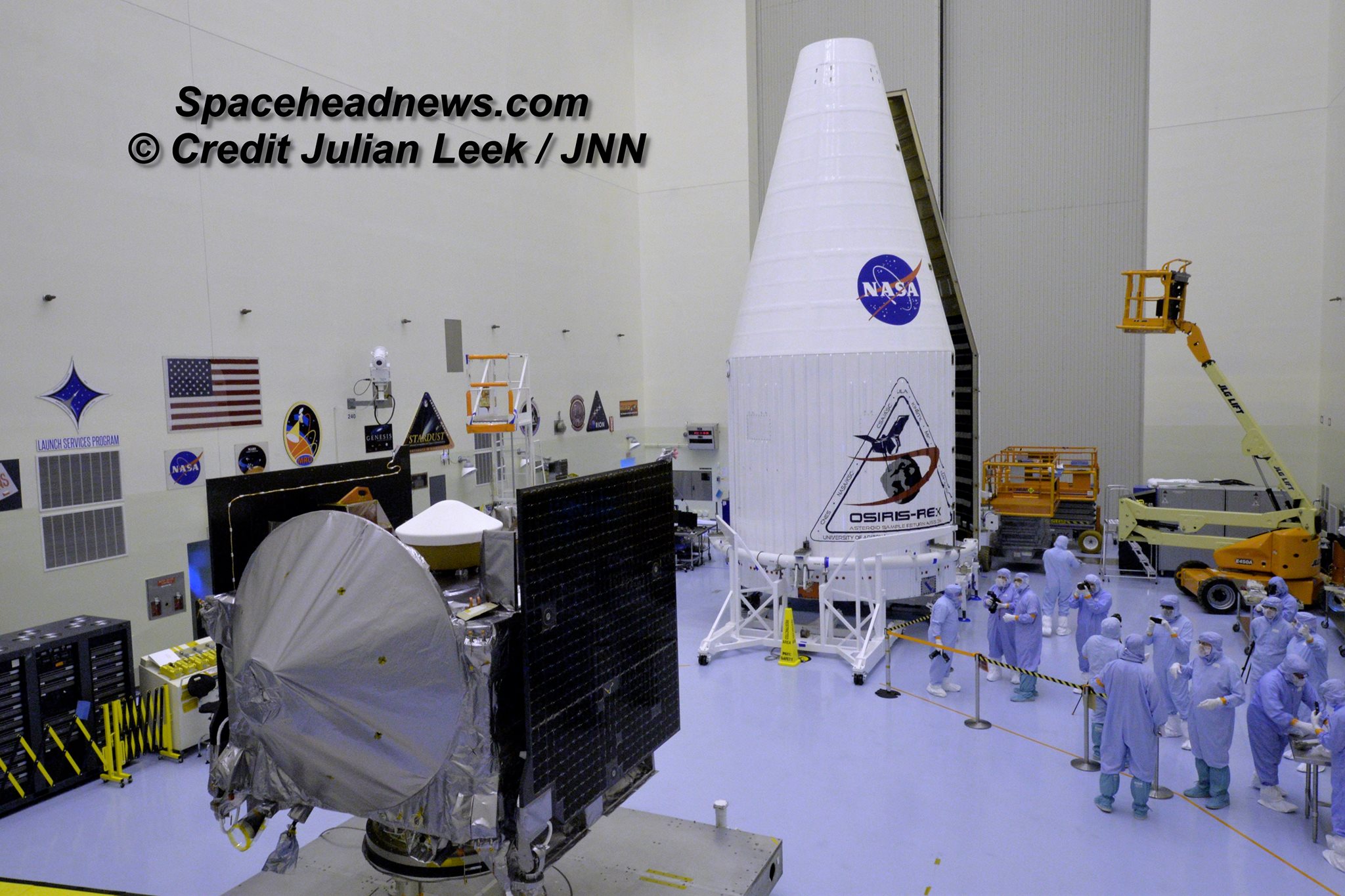
OSIRIS-REx will gather rocks and soil and bring at least a 60-gram (2.1-ounce) sample back to Earth in 2023. It has the capacity to scoop up to about 1 kg or more.
The mission will help scientists investigate how planets formed and how life began. It will also improve our understanding of asteroids that could impact Earth by measuring the Yarkovsky effect.
I asked Lauretta to explain in more detail why was Bennu selected as the target to answer fundamental questions related to the origin of life?
“We selected asteroid Bennu as the target for this mission because we feel it has the best chance of containing those pristine organic compounds from the early stage of solar system formation,” Lauretta told me.
“And that information is based on our ground based spectral characterization using telescopes here on Earth. Also, space based assets like the Hubble Space Telescope and the Spitzer Space Telescope.”
What is known about the presence of nitrogen containing compounds like amino acids and other elements on Bennu that are the building blocks of life?
“When we look at the compounds that make up these organic materials in these primitive asteroidal materials, we see a lot of carbon,” Lauretta explained.
“But we also see nitrogen, oxygen, hydrogen, sulfur and phosphorous. We call those the CHONPS. Those are the six elements we really focus on when we look at astrobiology and prebiotic chemistry and how those got into the origin of life.”
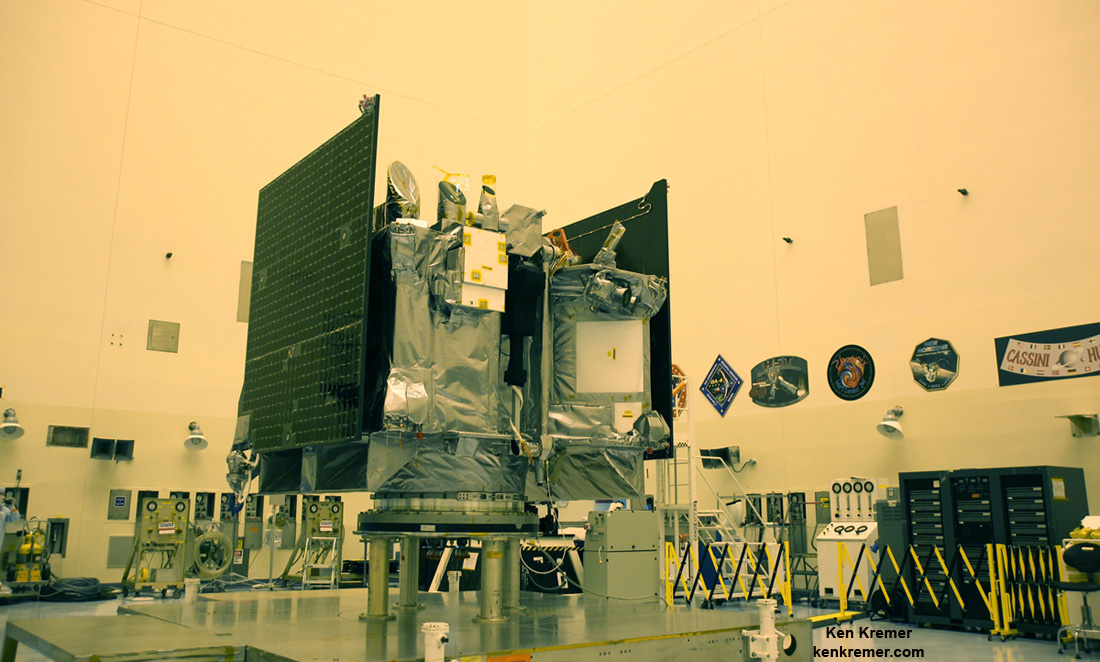
The OSIRIS-REx spacecraft was built for NASA by prime contractor Lockheed Martin at their facility near Denver, Colorado and flown to the Kennedy Space Center on May 20.
For the past three months it has undergone final integration, processing and testing inside the PHSF under extremely strict contamination control protocols to prevent contamination by particle, aerosols and most importantly organic residues like amino acids that could confuse researchers seeking to discover those very materials in the regolith samples gathered for return to Earth.
The PHFS clean room was most recently used to process the Orbital ATK Cygnus space station resupply vehicles. It has also processed NASA interplanetary probes such as the Curiosity Mars Science Laboratory and MAVEN Mars orbiter missions.

The spacecraft will reach Bennu in 2018. Once within three miles (5 km) of the asteroid, the spacecraft will begin at least six months of comprehensive surface mapping of the carbonaceous asteroid, according to Heather Enos, deputy principal investigator, in an interview with Universe Today.
“We will then move the spacecraft to within about a half kilometer or so to collect further data,” Enos elaborated.
It will map the chemistry and mineralogy of the primitive carbonaceous asteroid. The team will initially select about 10 target areas for further scrutiny as the sampling target. This will be whittled down to two, a primary and backup, Enos told me.
After analyzing the data returned, the science team then will select a site where the spacecraft’s robotic sampling arm will grab a sample of regolith and rocks. The regolith may record the earliest history of our solar system.
Engineers will command the spacecraft to gradually move on closer to the chosen sample site, and then extend the arm to snatch the pristine samples the TAGSAM sample return arm.
PI Lauretta will make the final decision on when and which site to grab the sample from.
“As the Principal Investigator for the mission I have responsibility for all of the key decisions during our operations,” Lauretta replied. “So we will be deciding on where we want to target our high resolution investigations for sample site evaluation. And ultimately what is the one location we want to send the spacecraft down to the surface of the asteroid to and collect that sample.”
“And then we have to decide like if we collected enough sample and are we ready to stow it in the sample return capsule. Or are we going to use one of our 2 contingency bottles of gas to go for a second attempt.”
“The primary objective is one successful sampling event. So when we collect 60 grams or 2 ounces of sample then we are done!”
“In the event that we decide to collect more, it will be intermixed with anything we collected on the first attempt.”
The priceless sample will then be stowed in the on board sample return capsule for the long journey back to Earth.

Bennu is an unchanged remnant from the collapse of the solar nebula and birth of our solar system some 4.5 billion years ago, little altered over time.
Bennu is a near-Earth asteroid and was selected for the sample return mission because it could hold clues to the origin of the solar system and host organic molecules that may have seeded life on Earth.
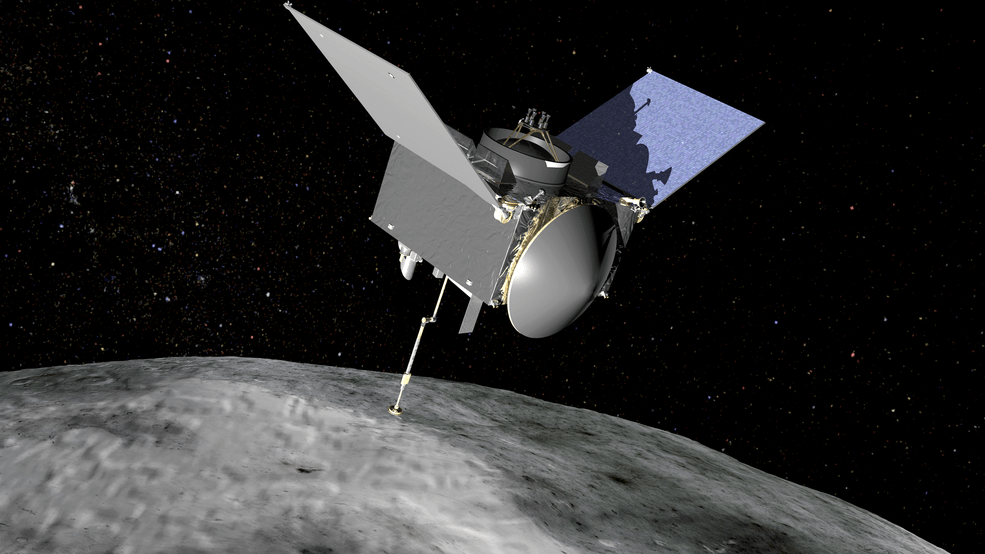
OSIRIS-REx will return the largest sample from space since the American and Soviet Union’s moon landing missions of the 1970s.
Watch this USLaunchReport video shot during media visit inside the PHSF on Aug. 20, 2016:
Video caption: Our first introduction to the OSIRIS-REx asteroid bound mission in search of the origins of life, from inside the Payloads Hazardous Servicing Facility at NASA’s Kennedy Space Center on Aug. 20, 2016. Credit: USLaunchReport
OSIRIS-REx is the third mission in NASA’s New Frontiers Program, following New Horizons to Pluto and Juno to Jupiter, which also launched on Atlas V rockets.
NASA’s Goddard Space Flight Center in Greenbelt, Maryland, is responsible for overall mission management.
OSIRIS-REx complements NASA’s Asteroid Initiative – including the Asteroid Redirect Mission (ARM) which is a robotic spacecraft mission aimed at capturing a surface boulder from a different near-Earth asteroid and moving it into a stable lunar orbit for eventual up close sample collection by astronauts launched in NASA’s new Orion spacecraft. Orion will launch atop NASA’s new SLS heavy lift booster concurrently under development.
Watch for Ken’s continuing OSIRIS-REx mission and launch reporting from on site at the Kennedy Space Center and Cape Canaveral Ait Force Station, FL.
Stay tuned here for Ken’s continuing Earth and planetary science and human spaceflight news.
